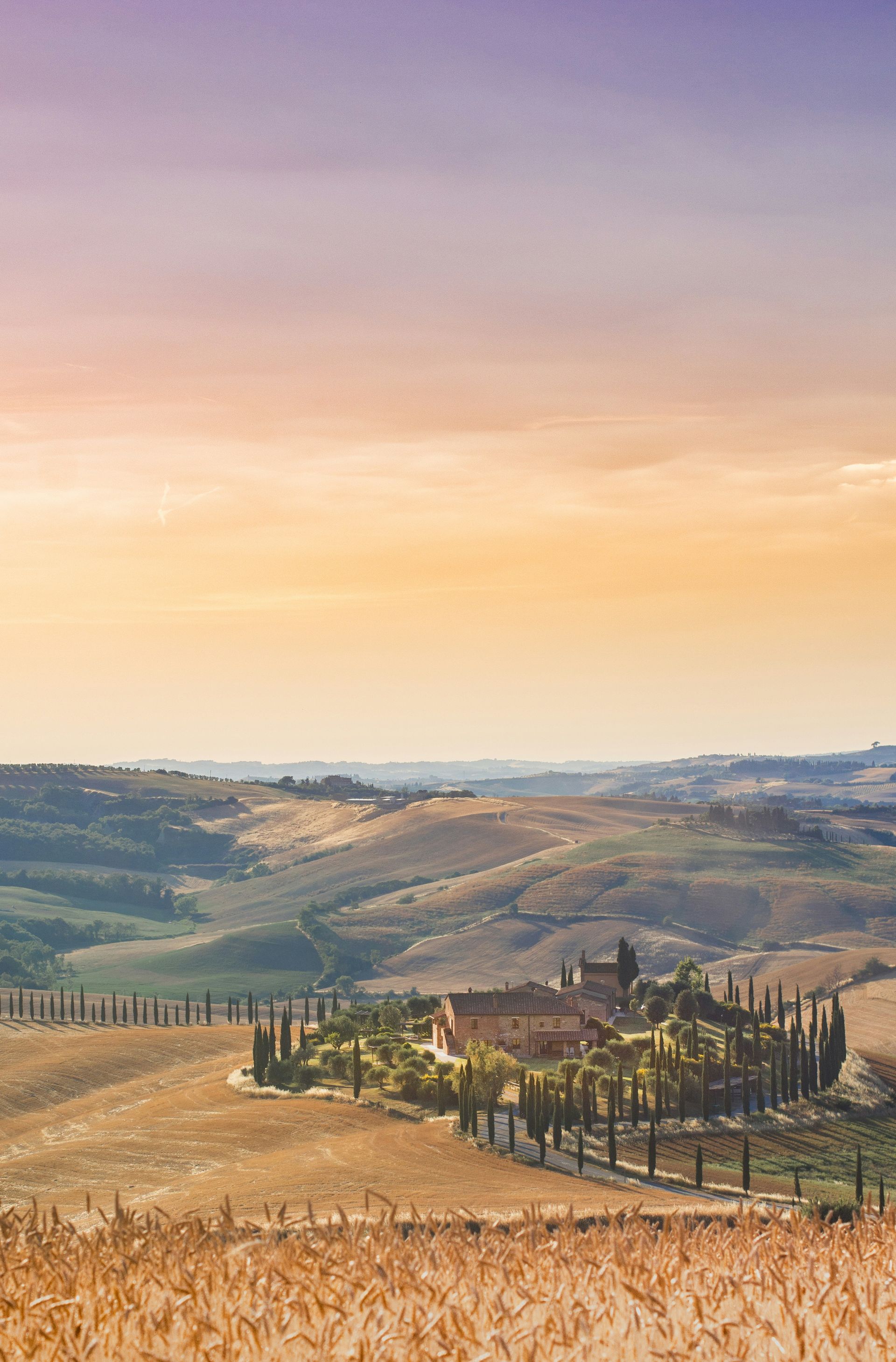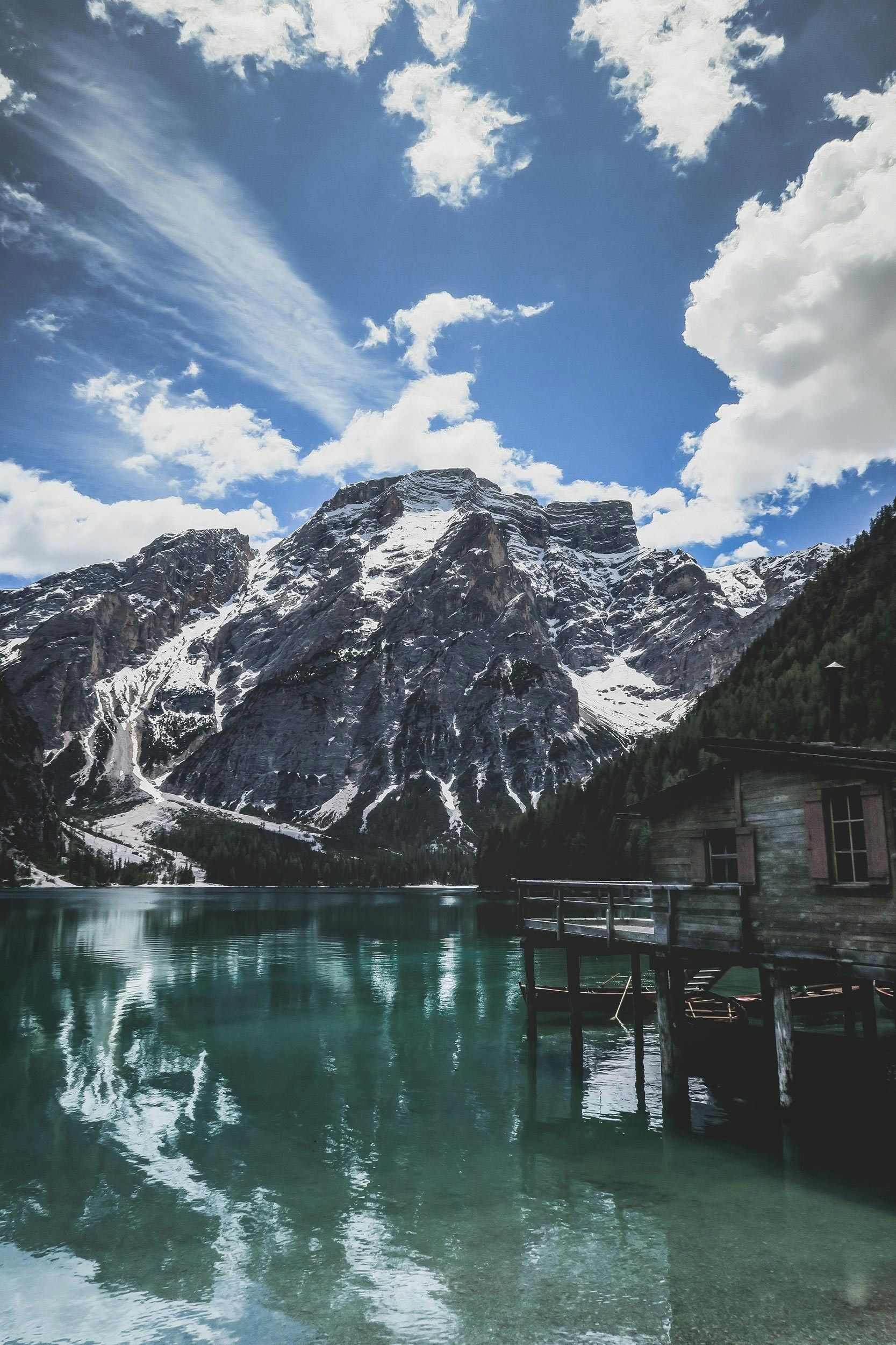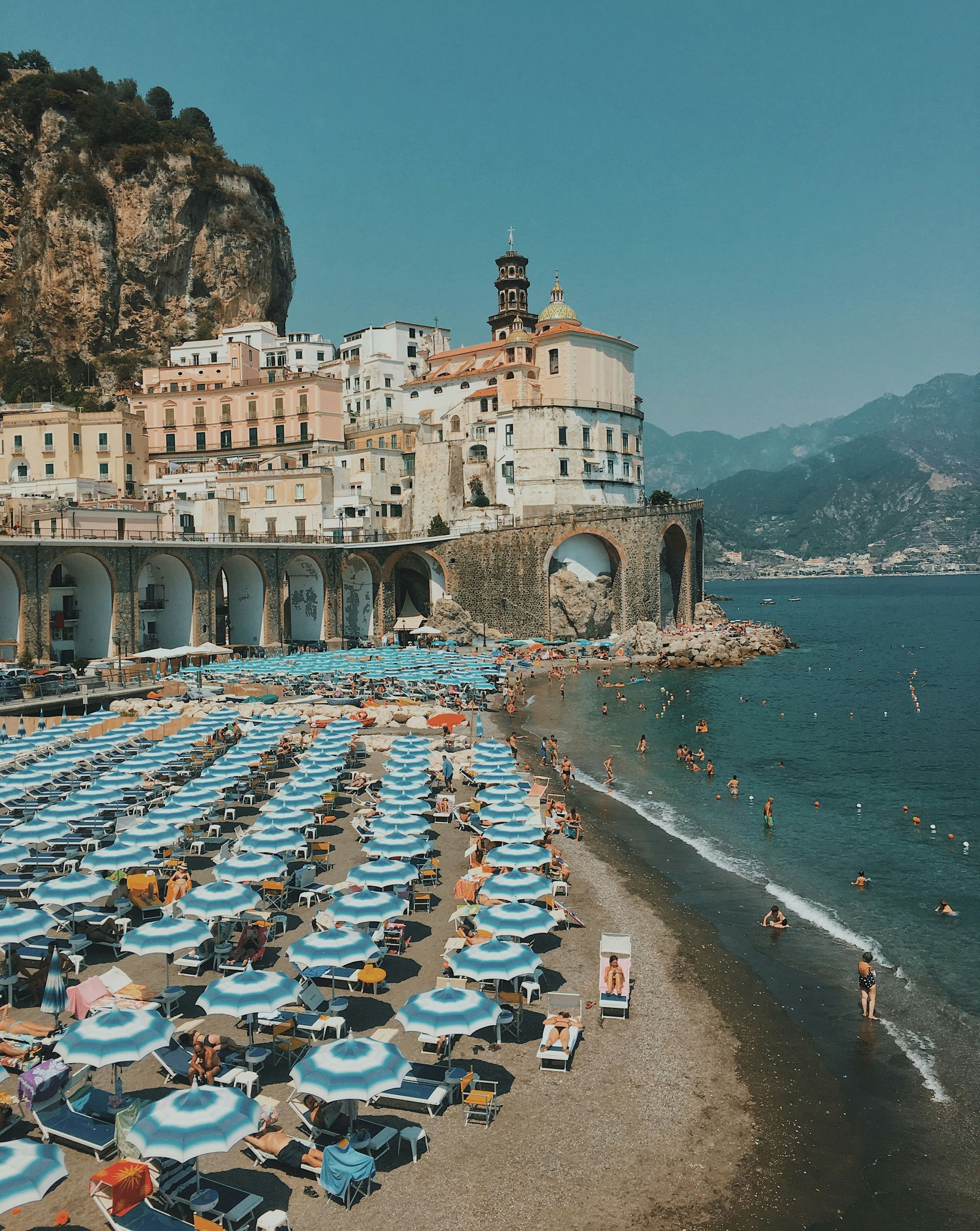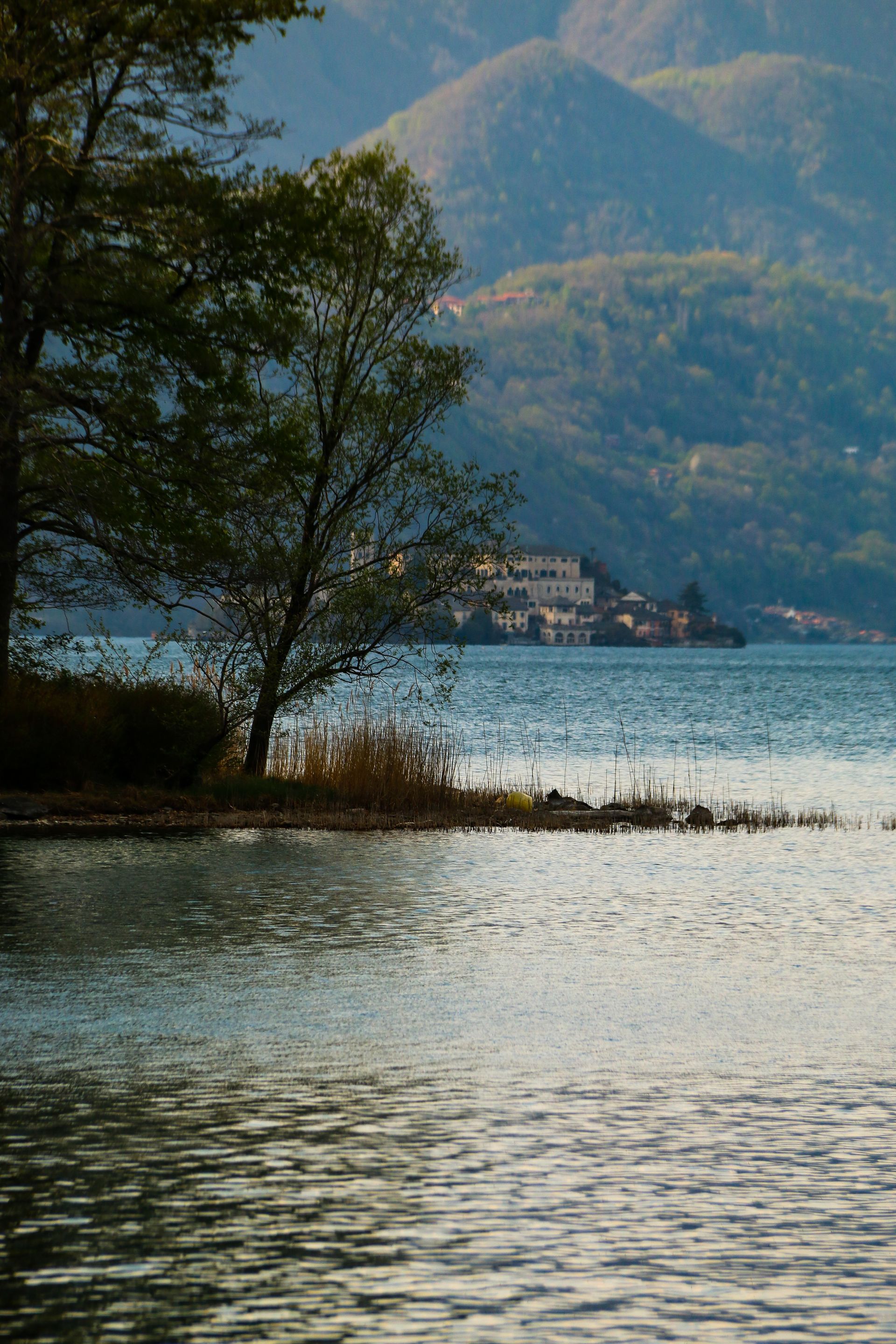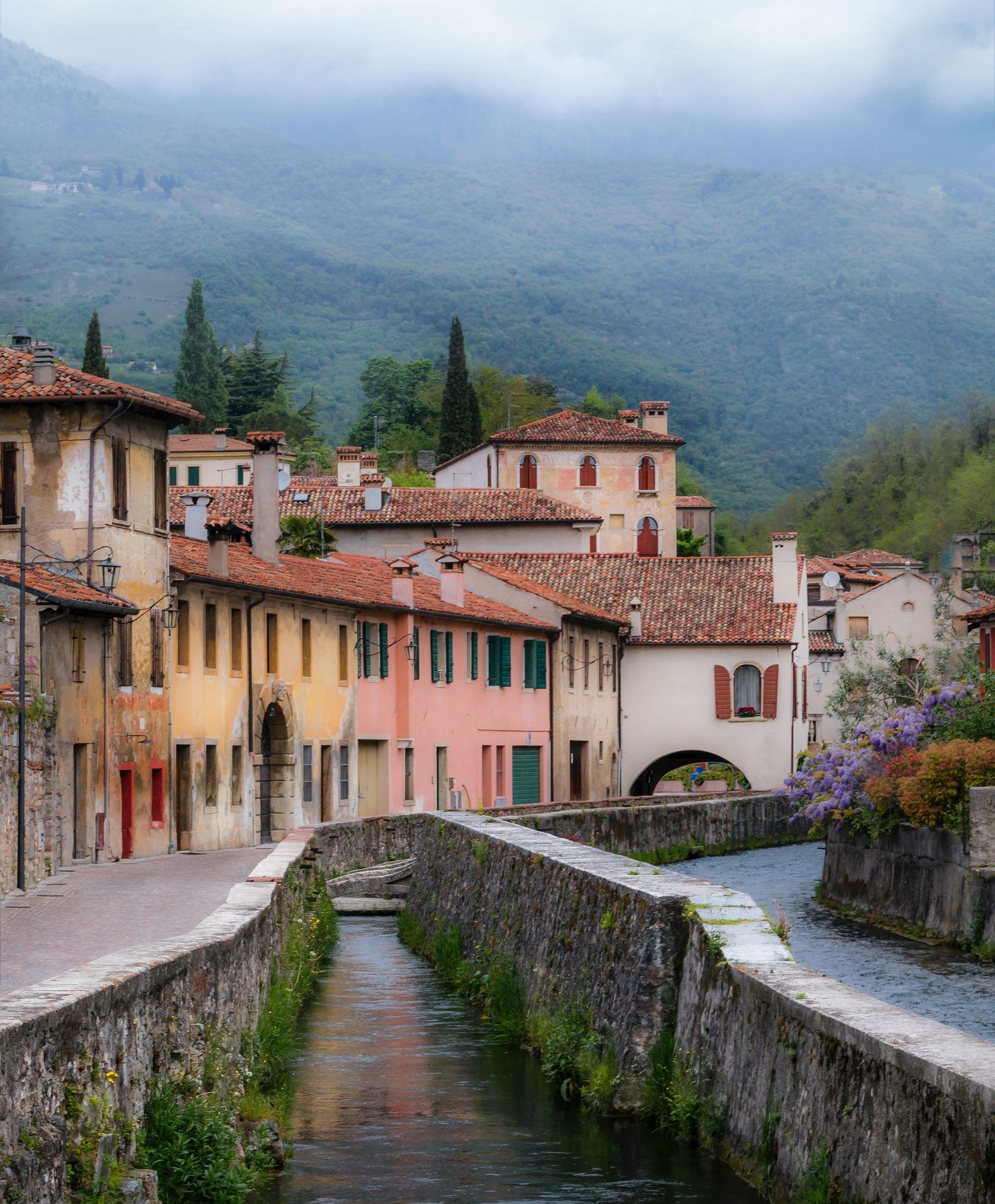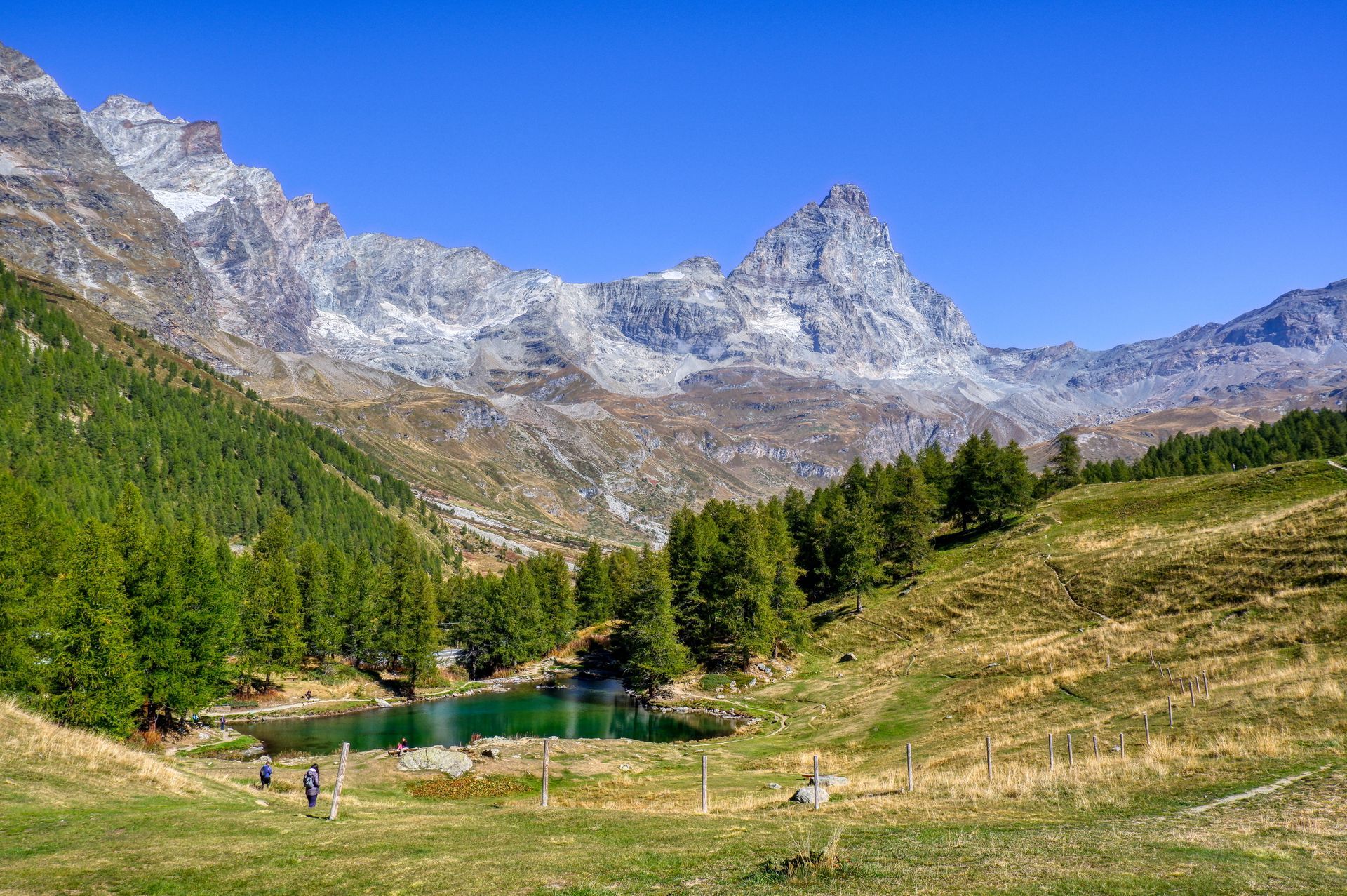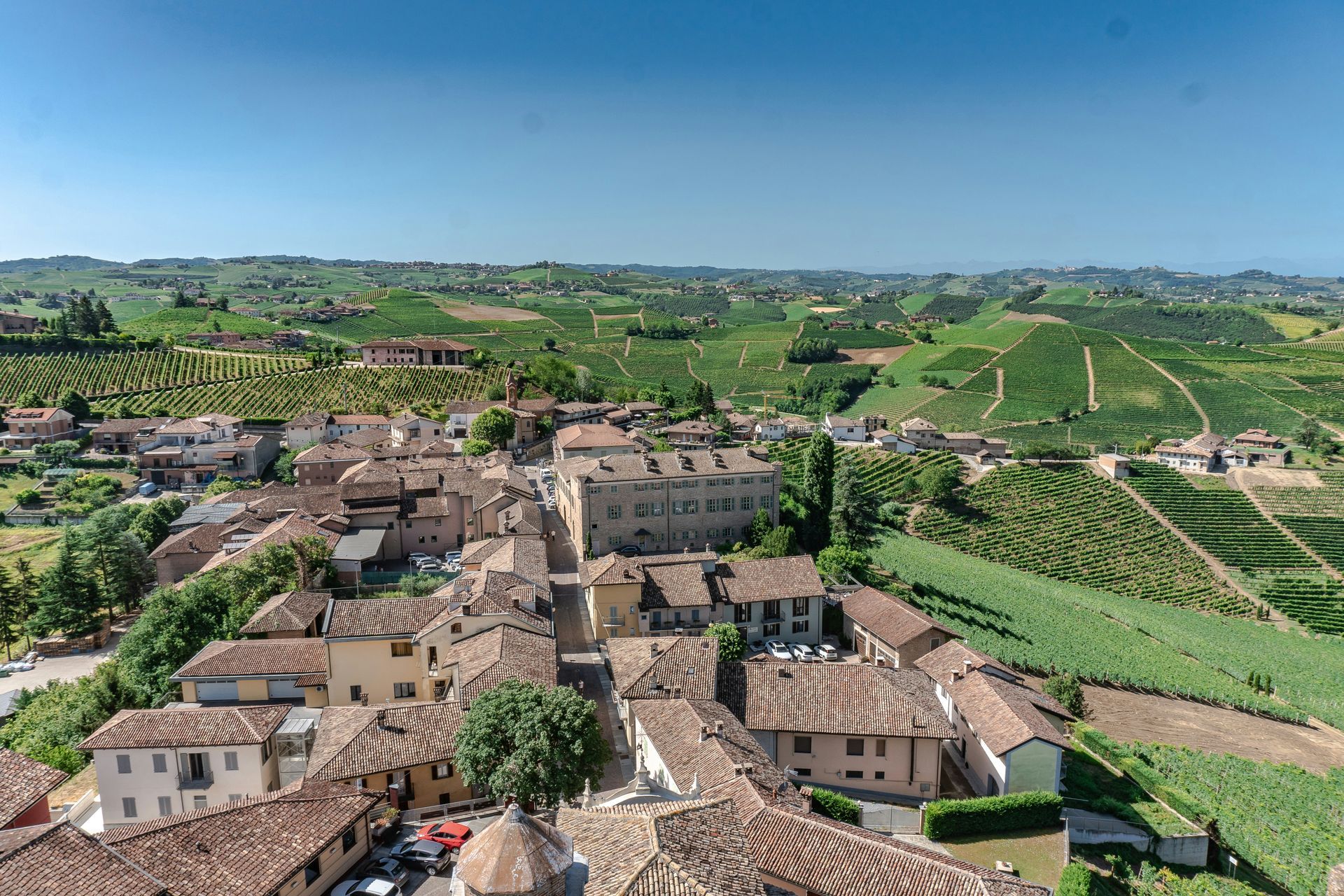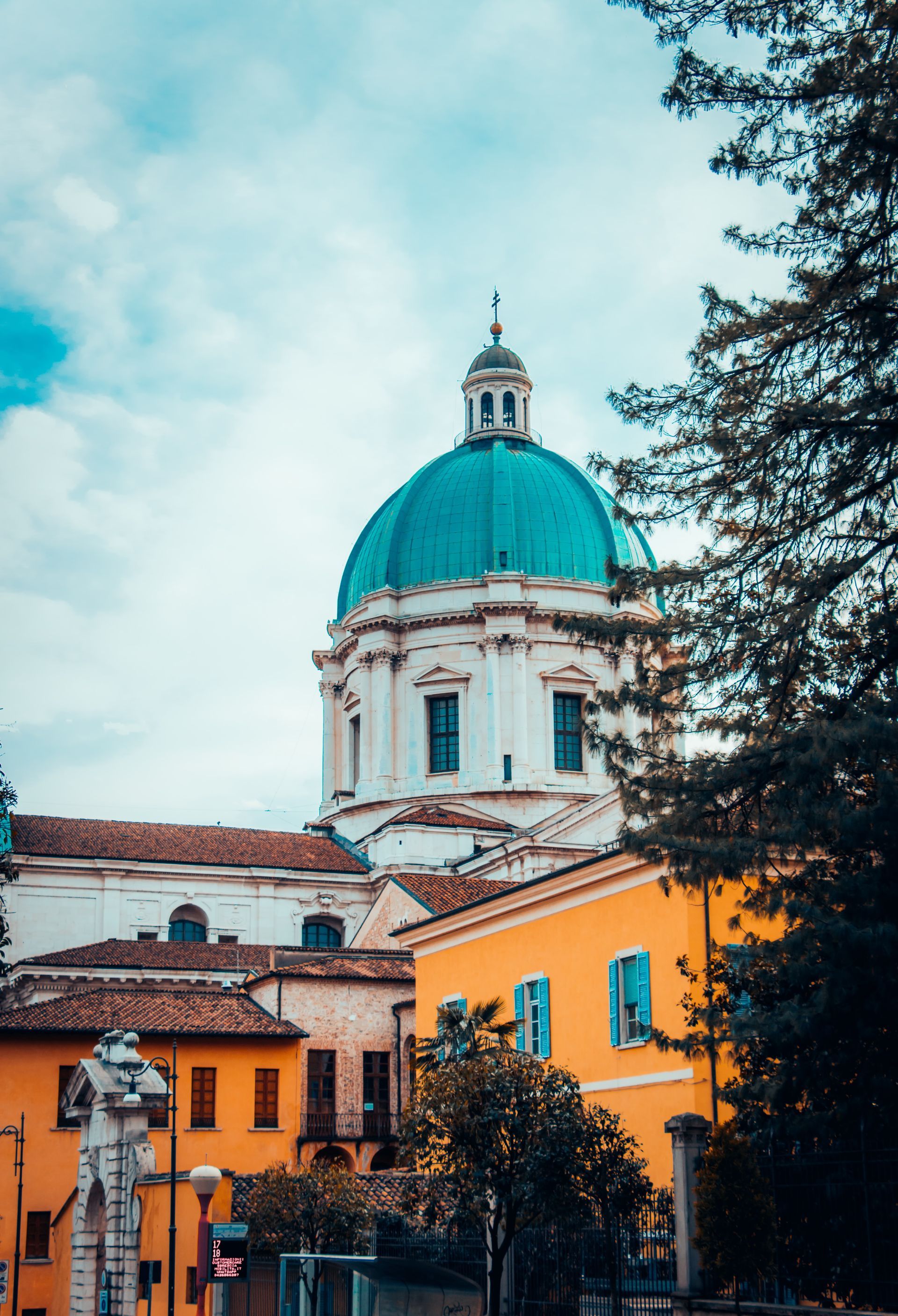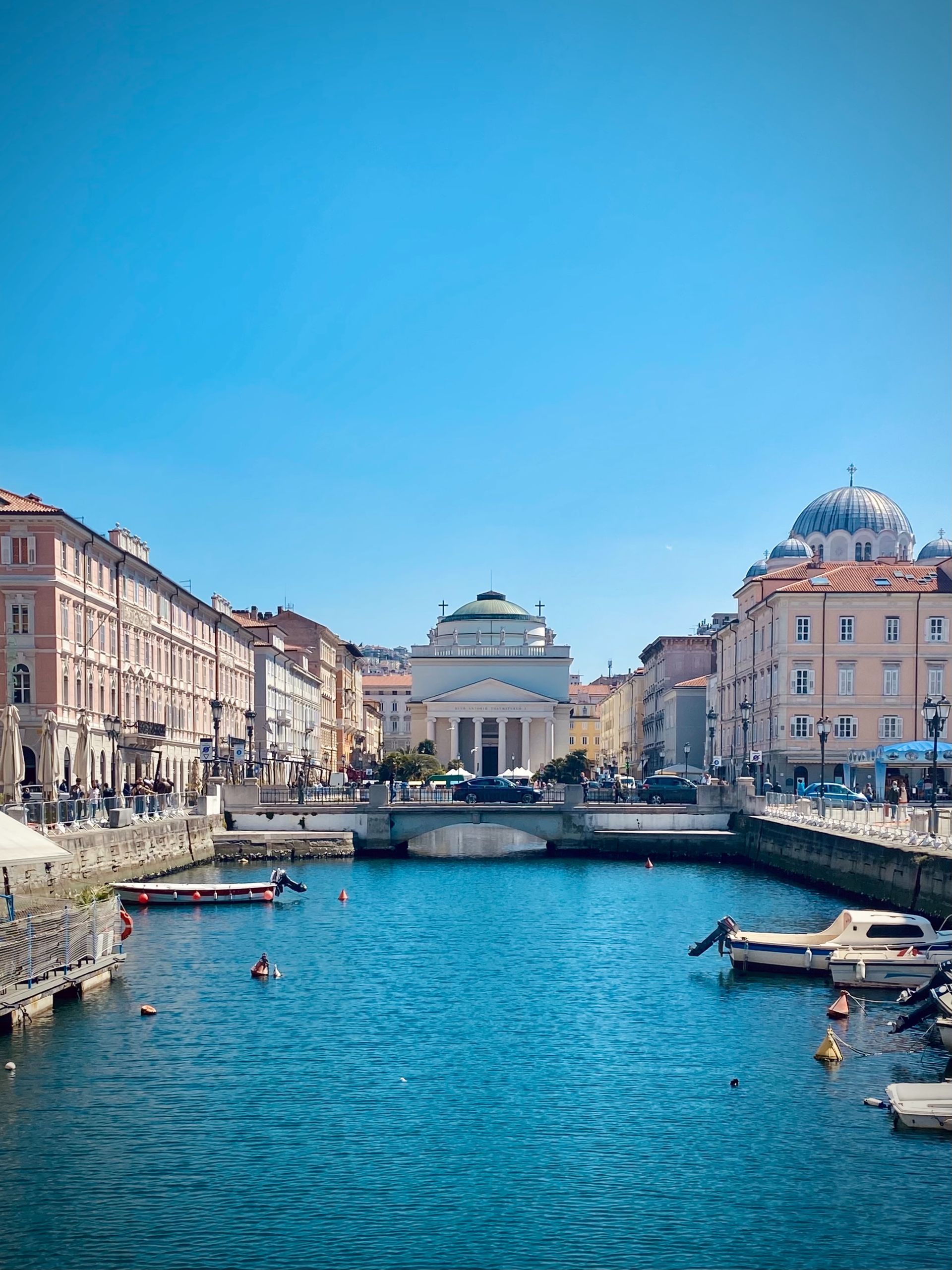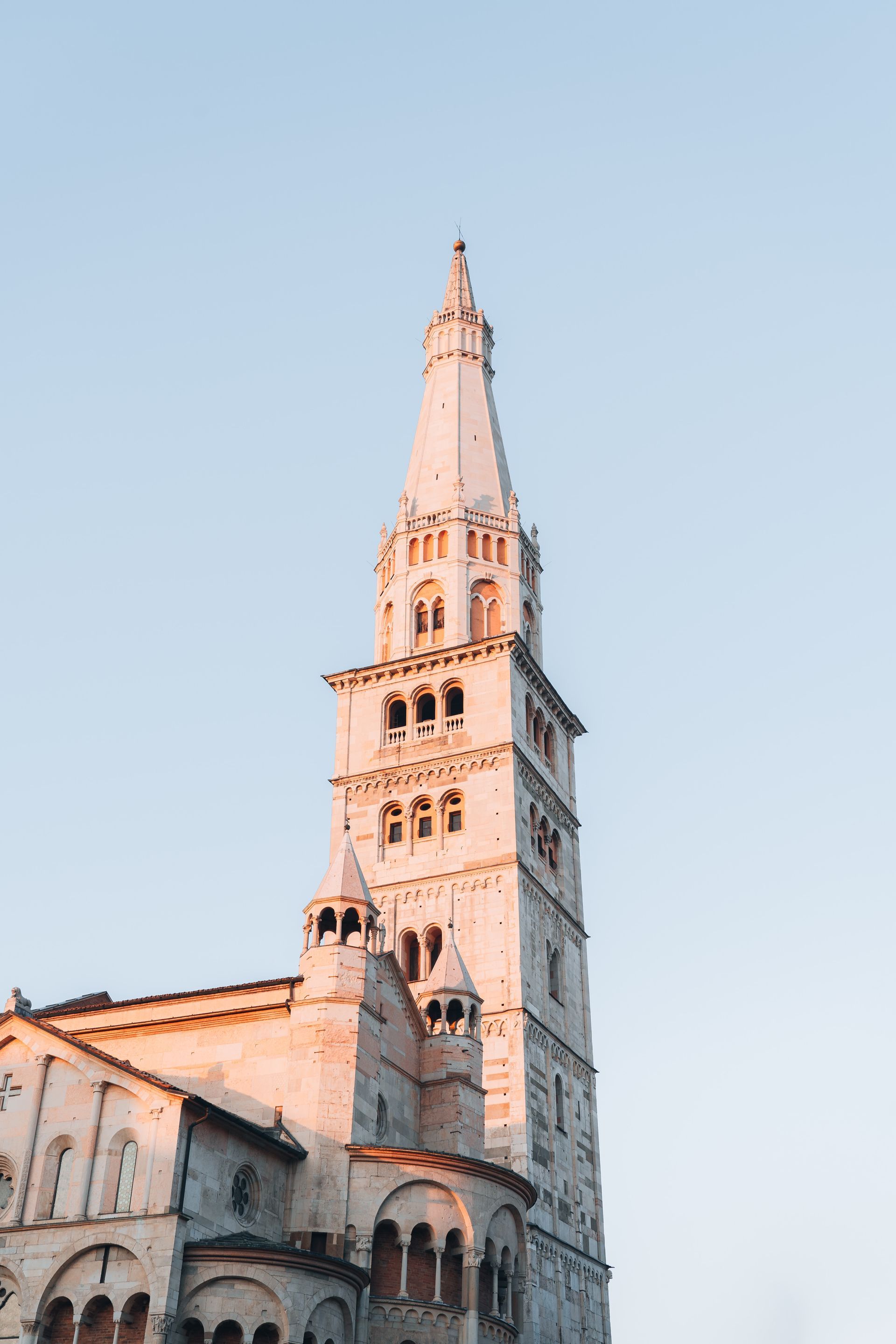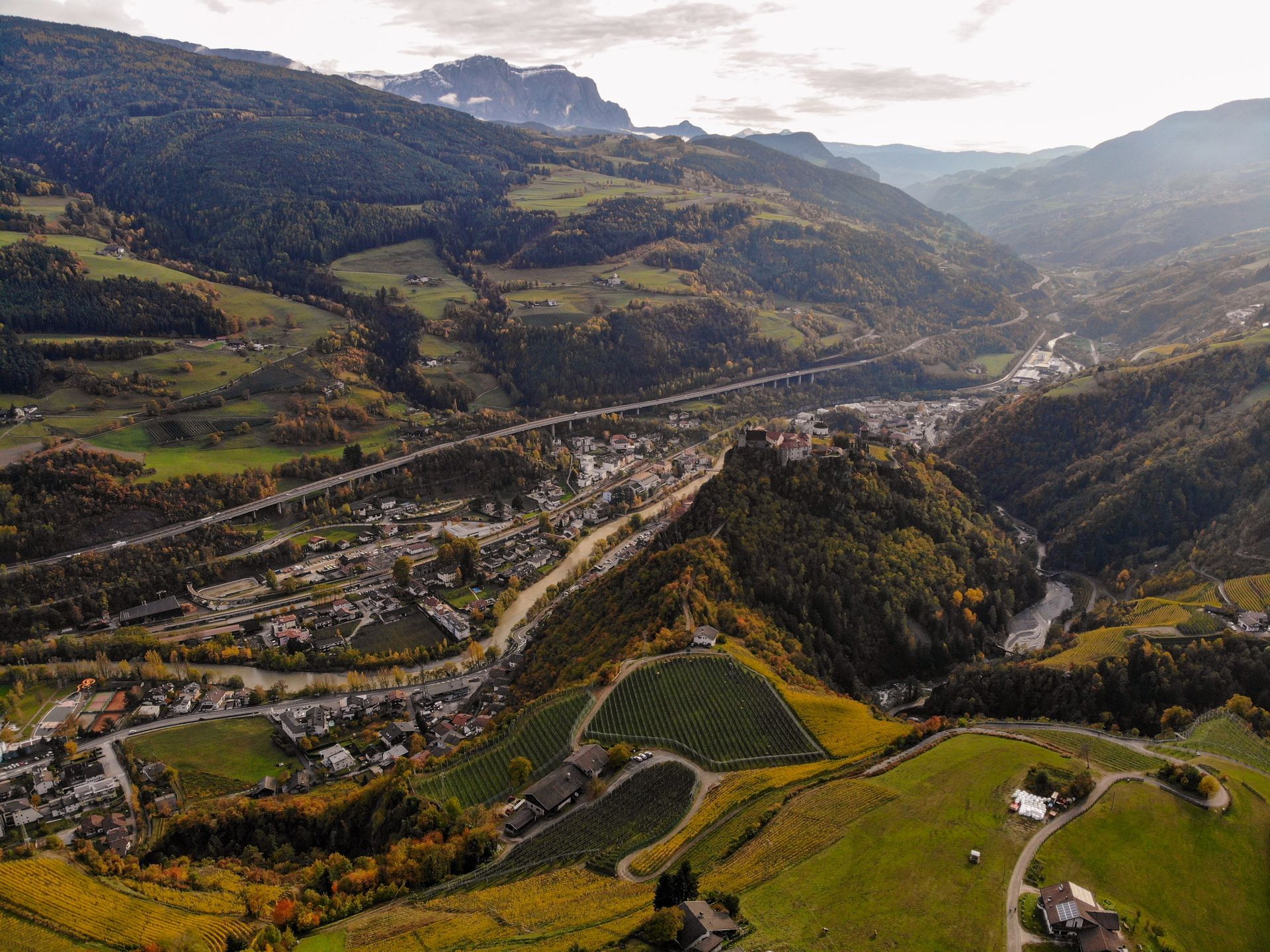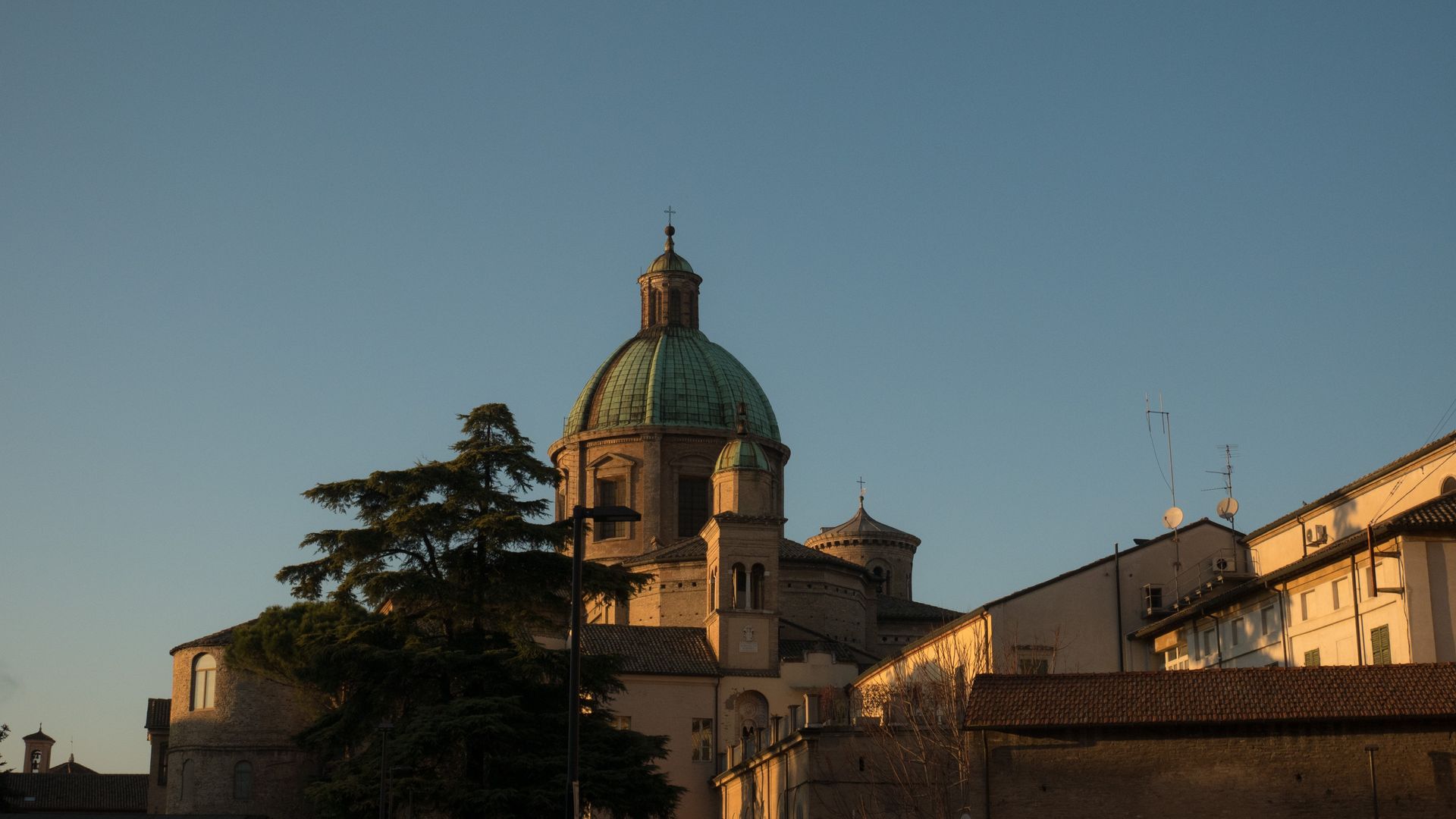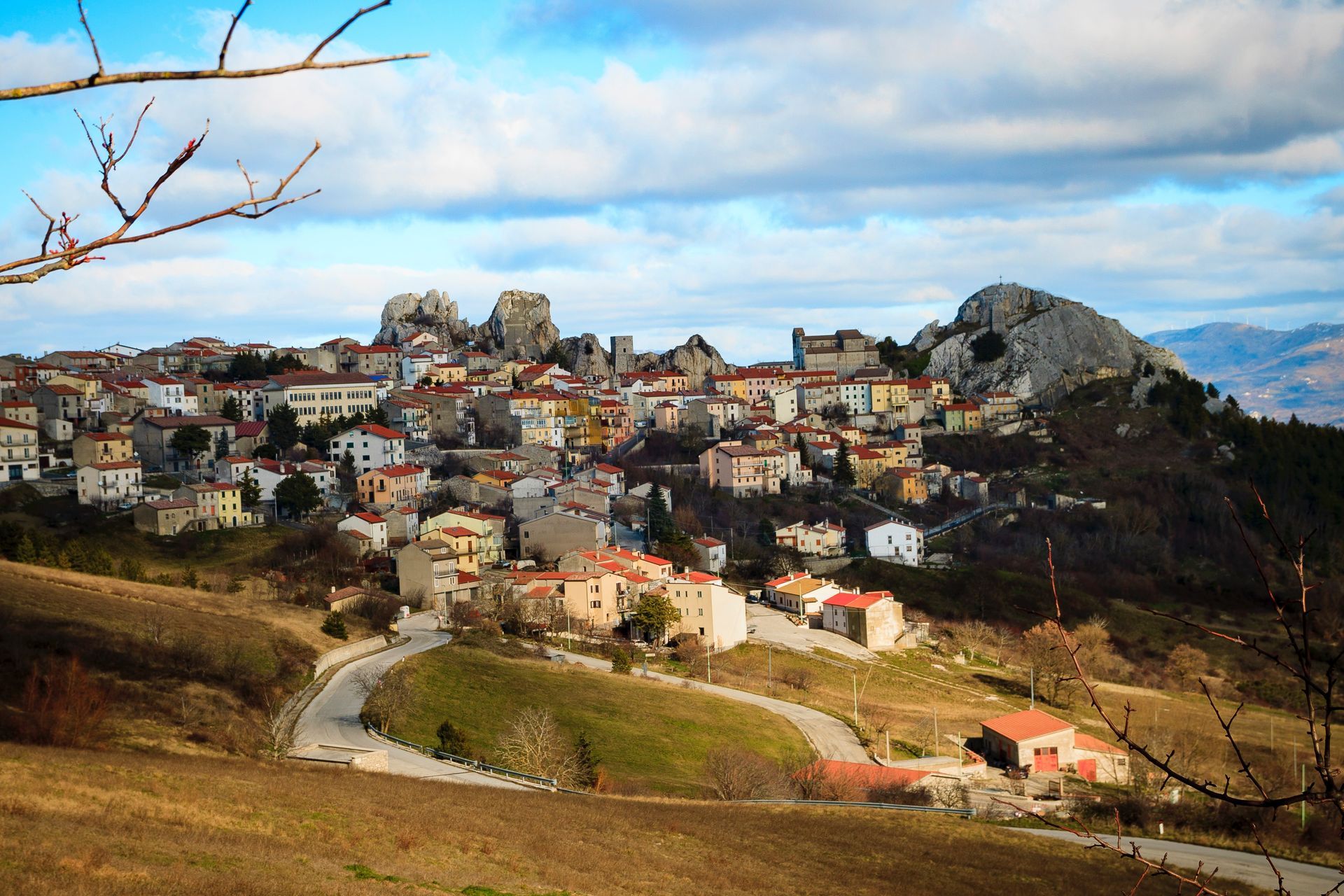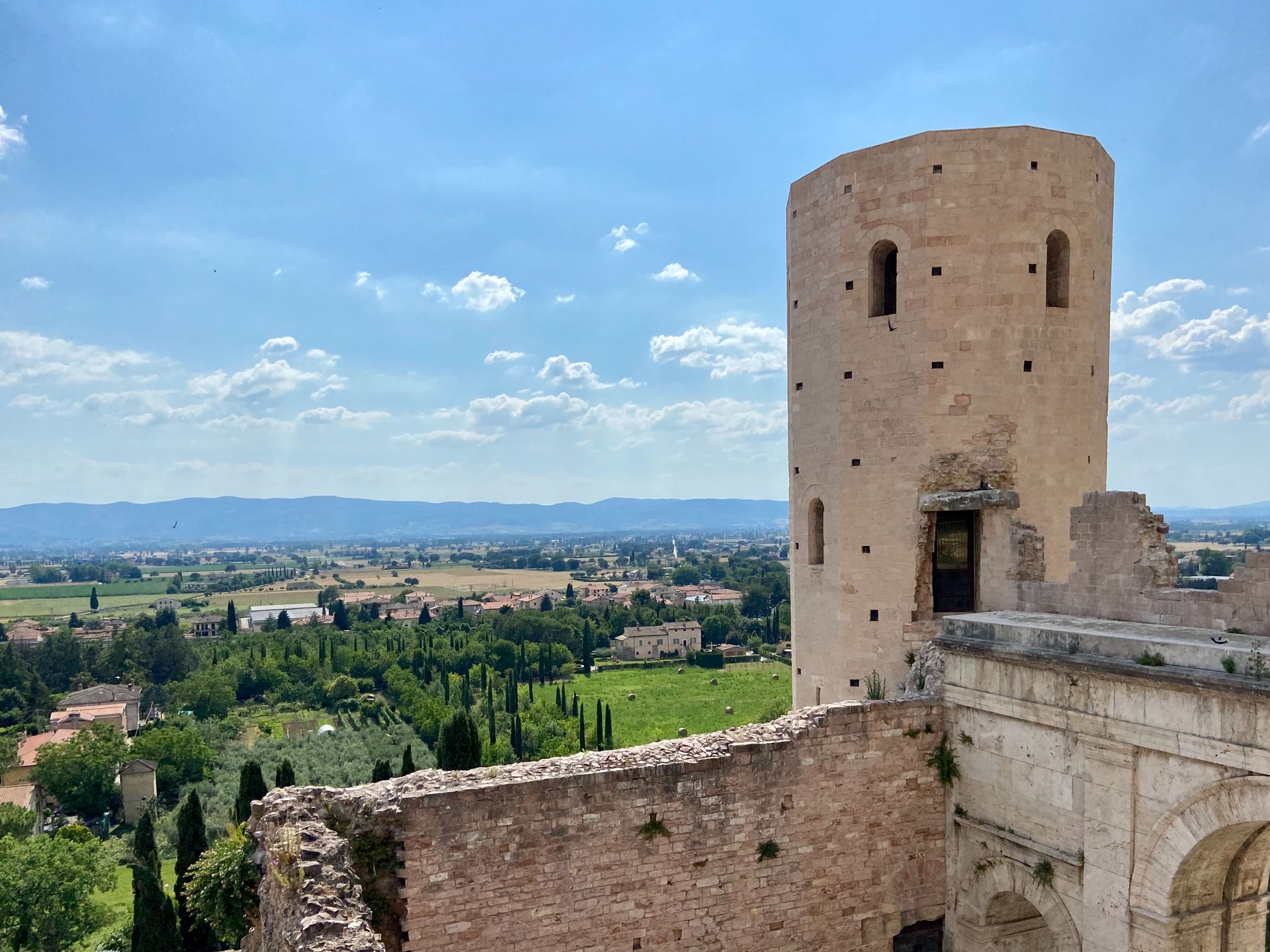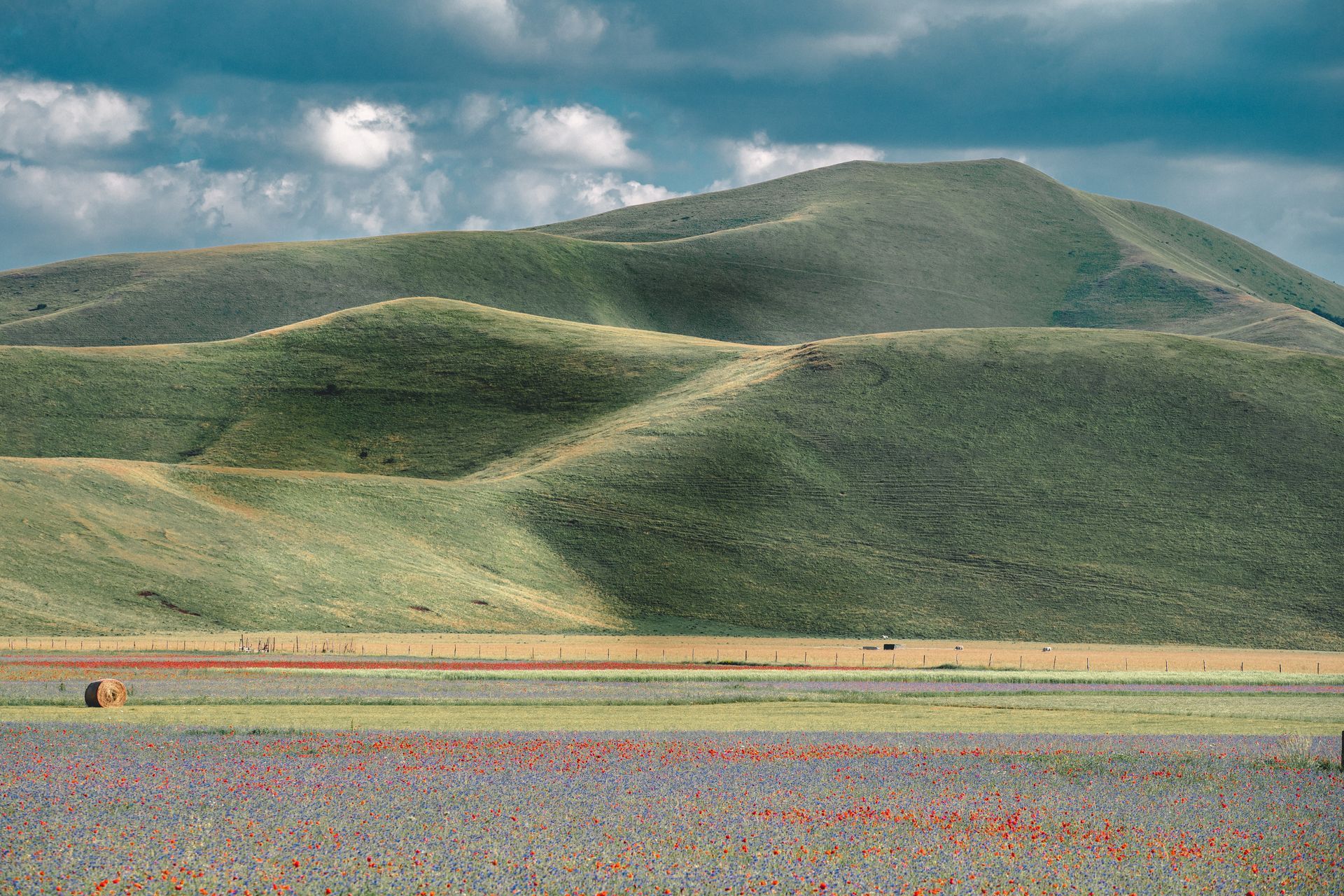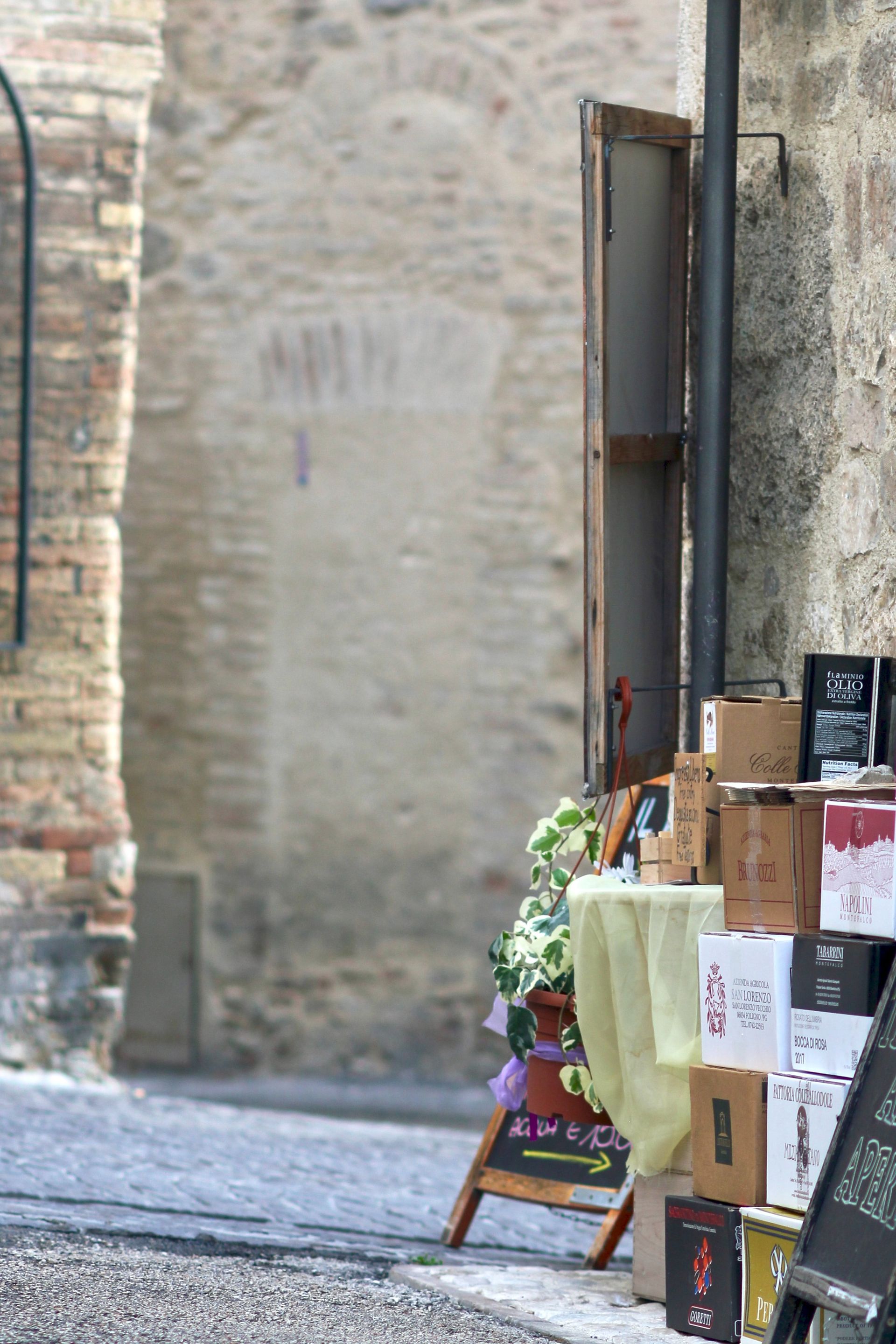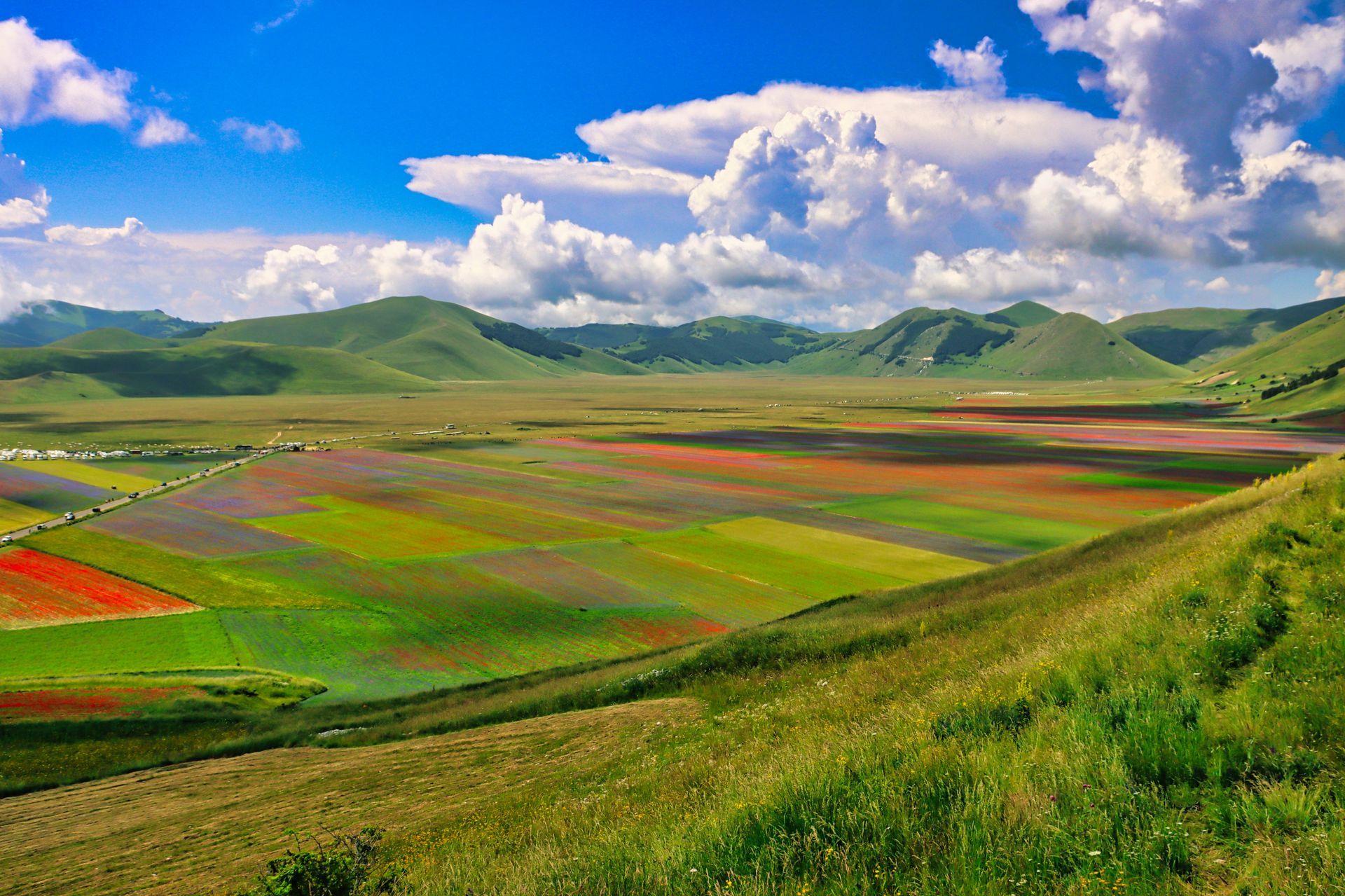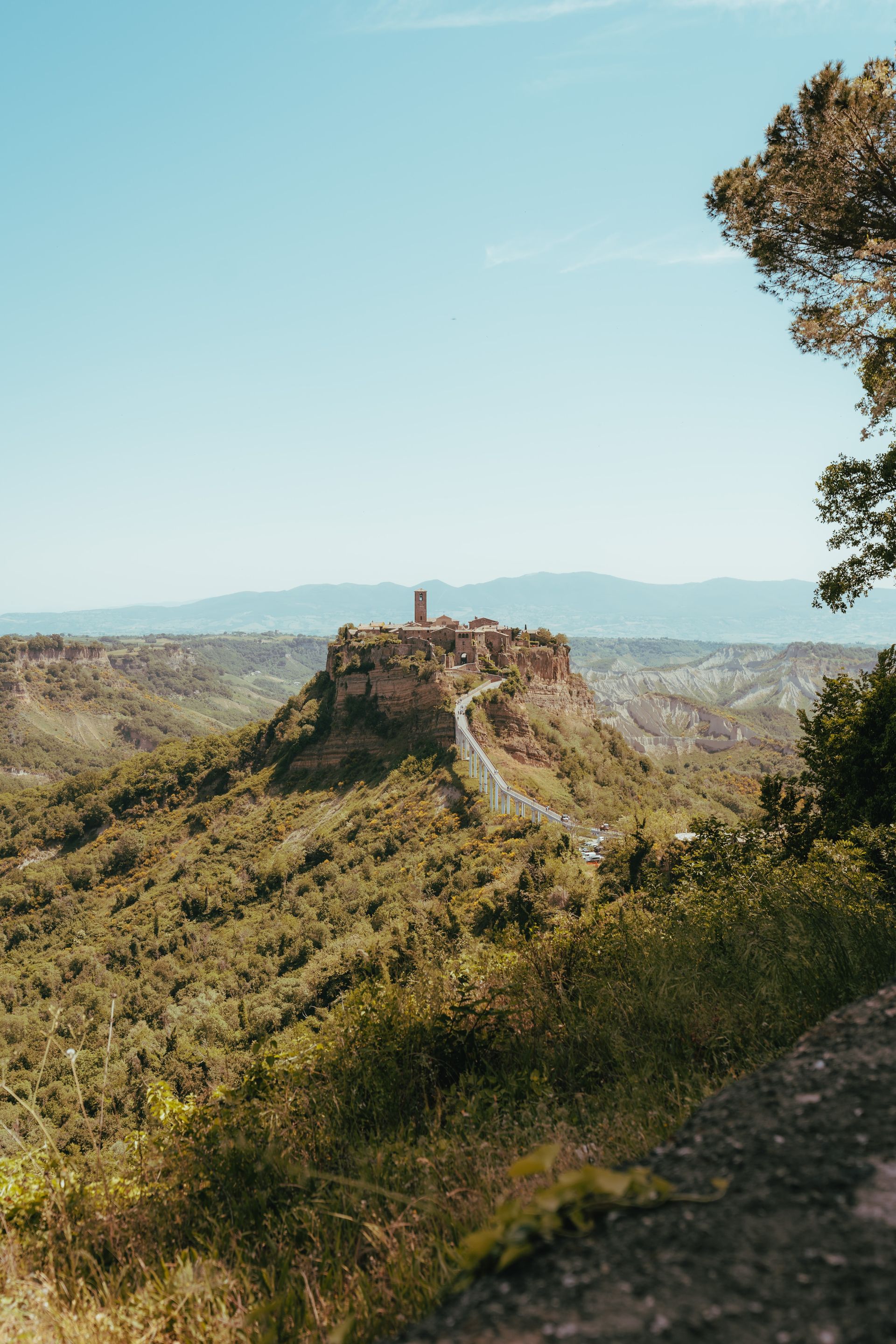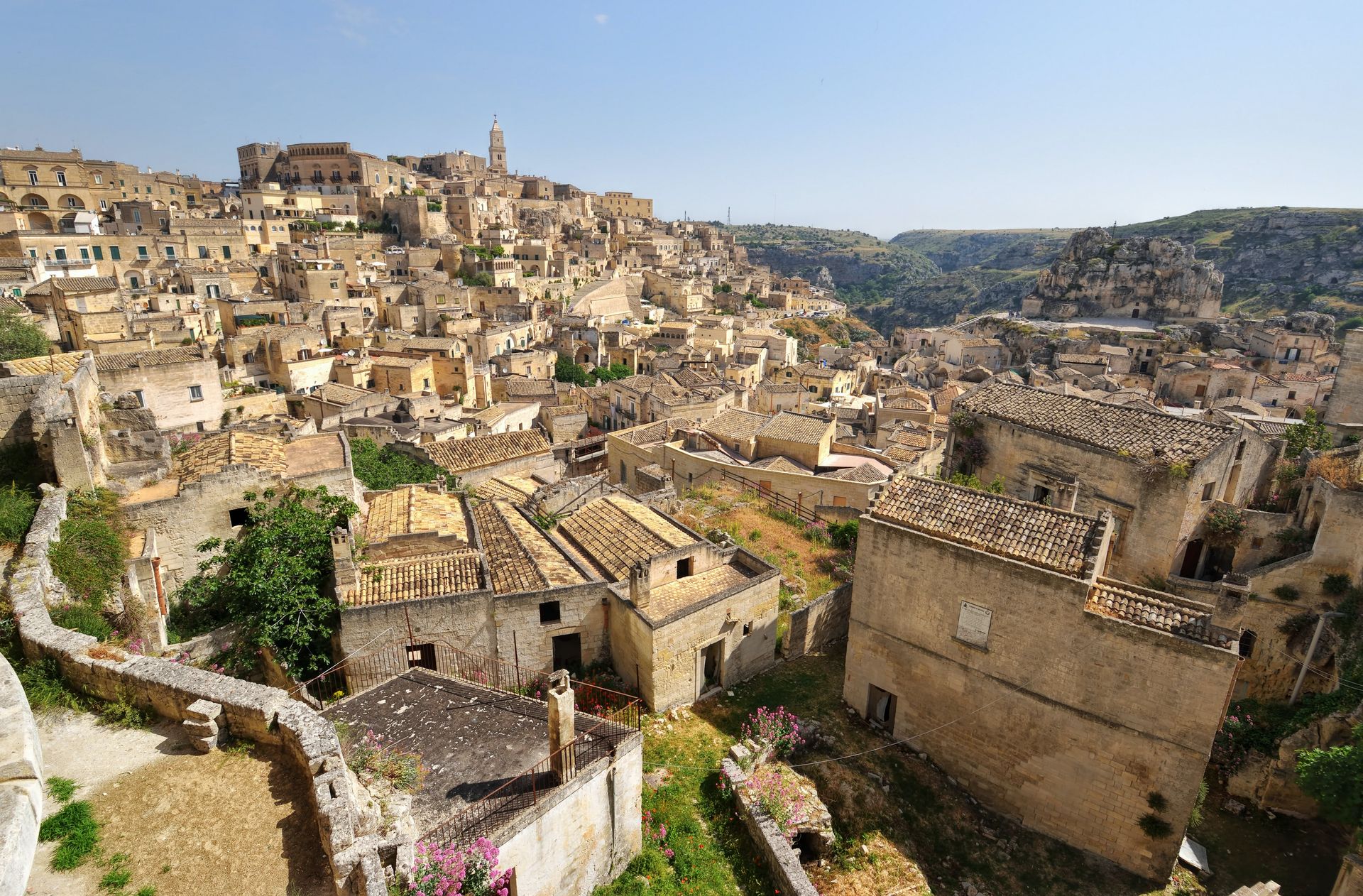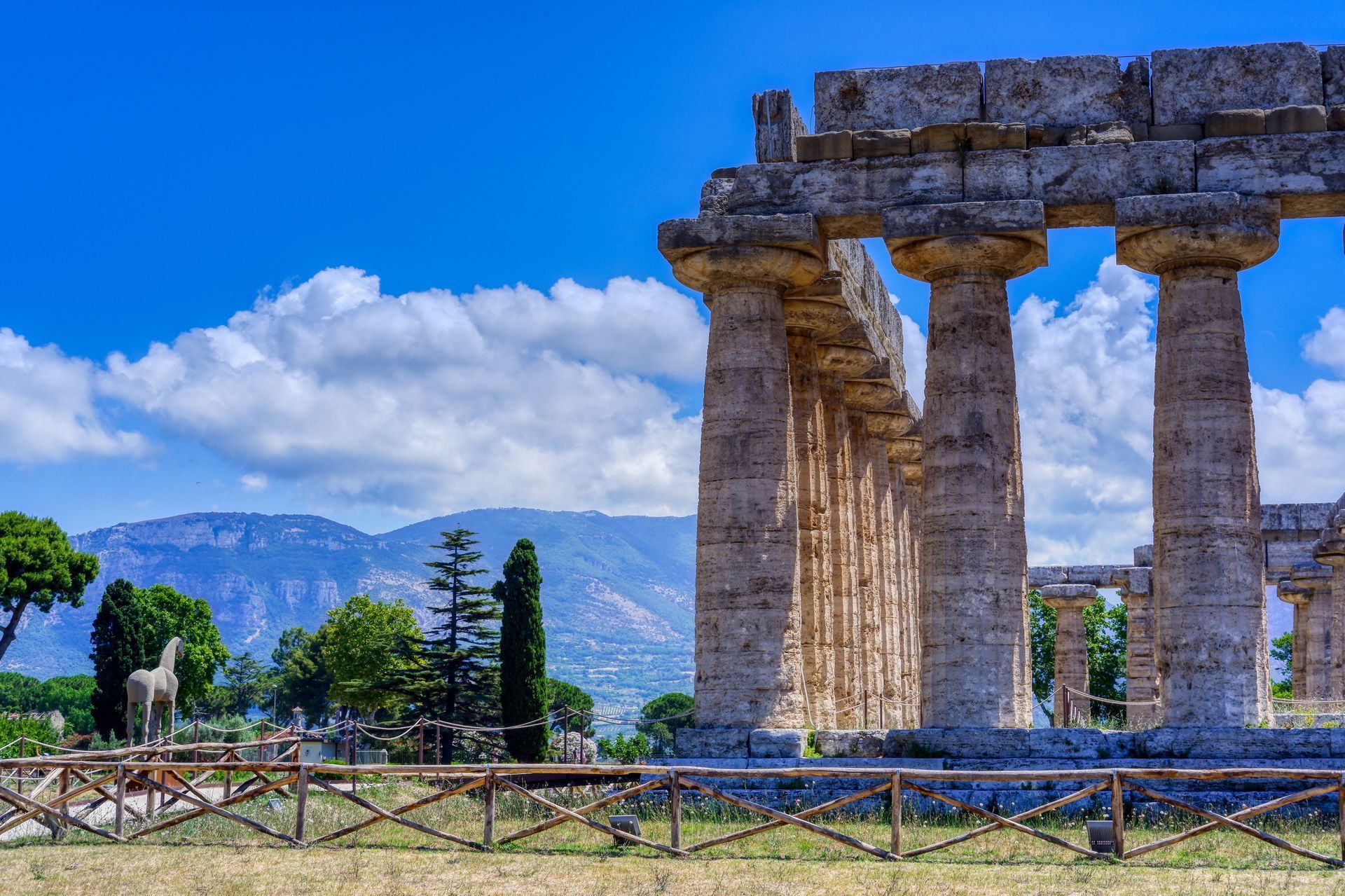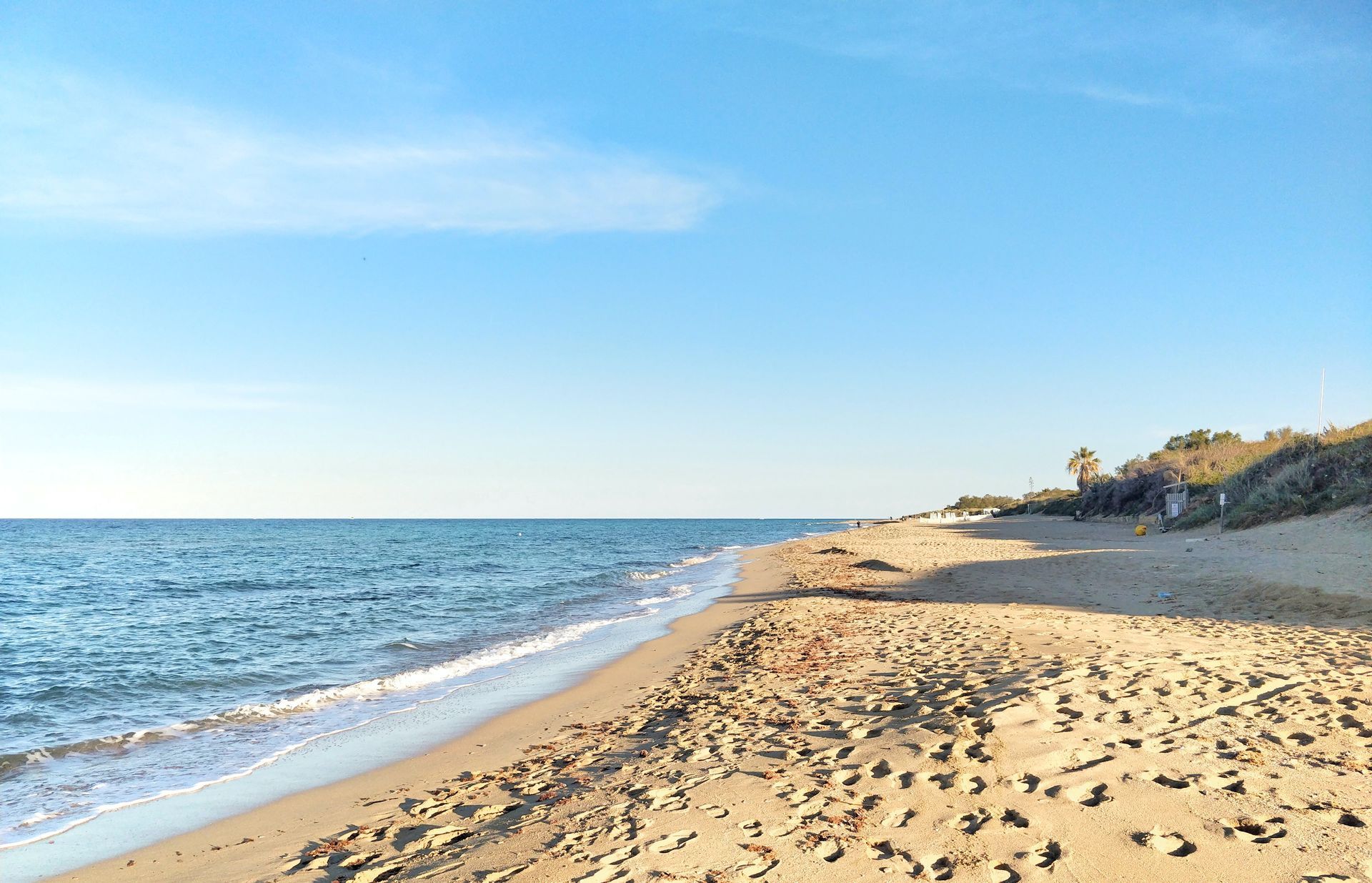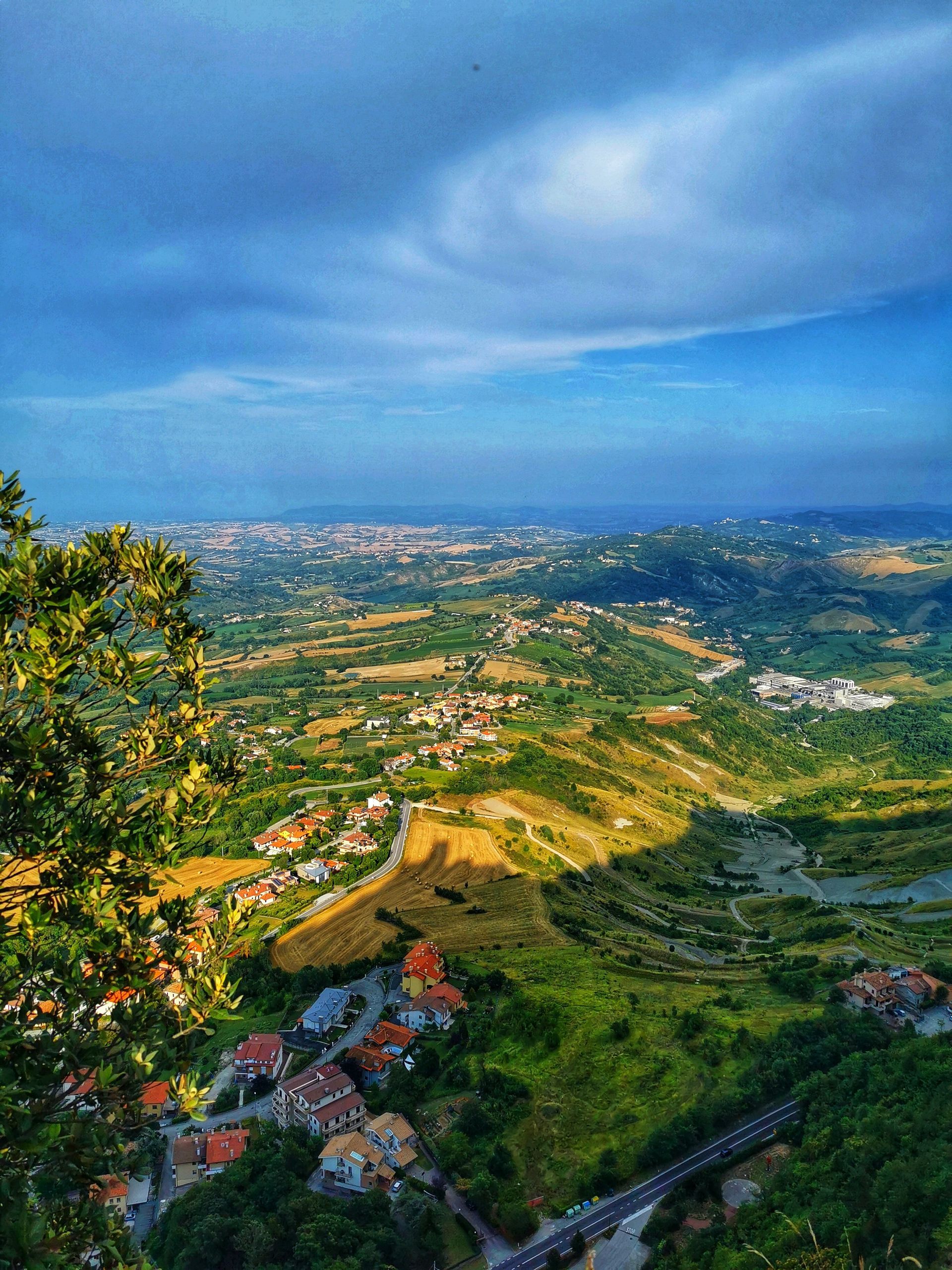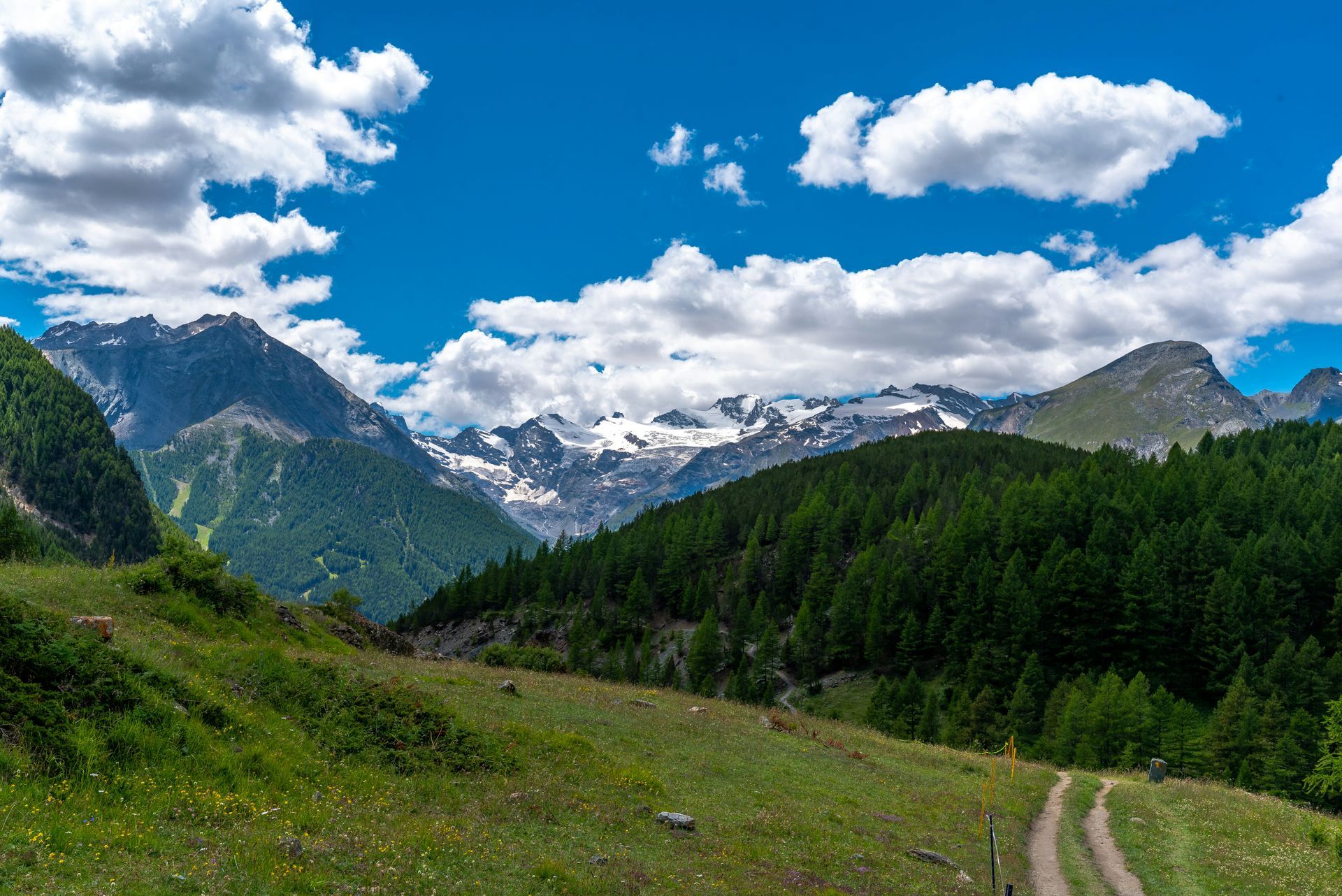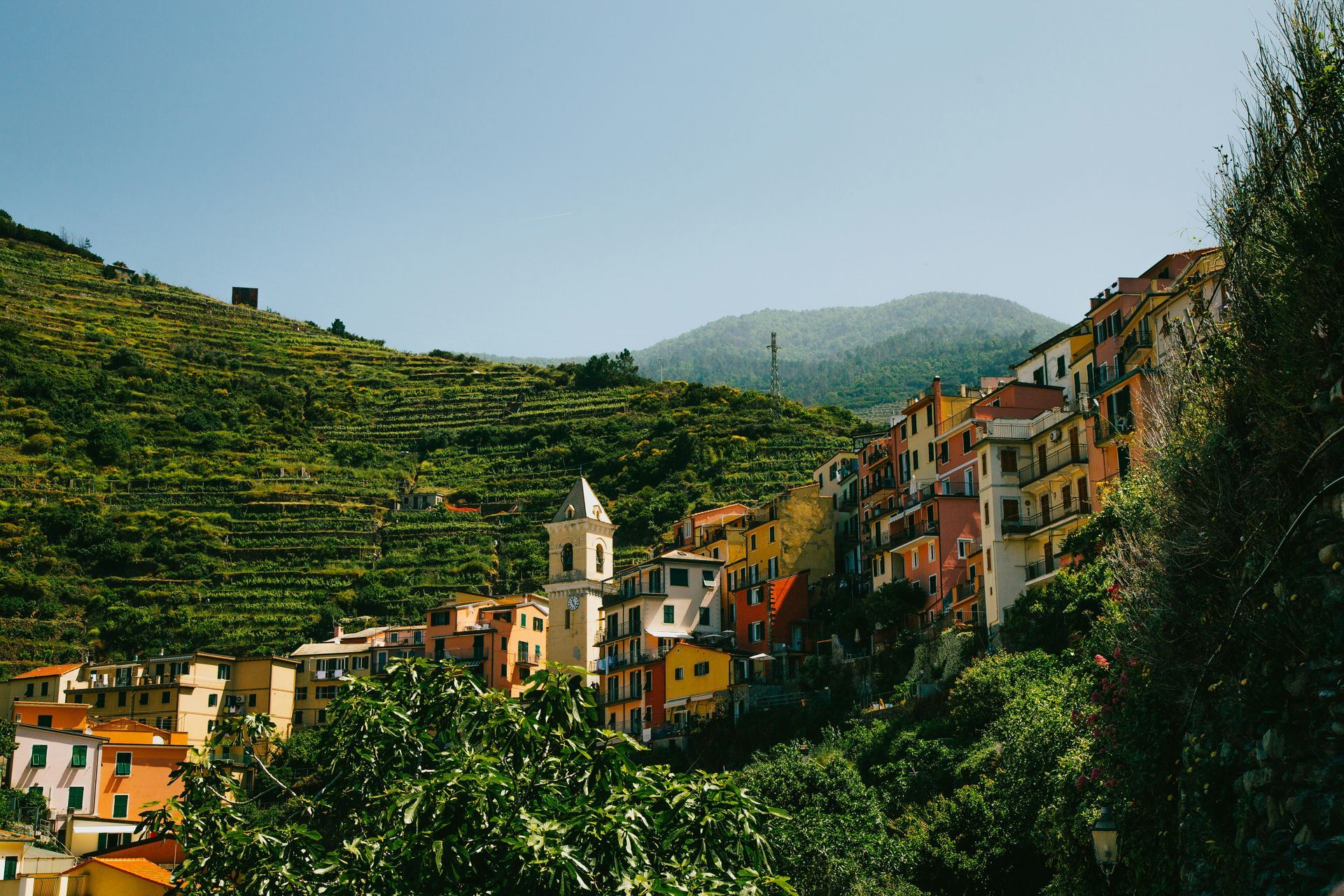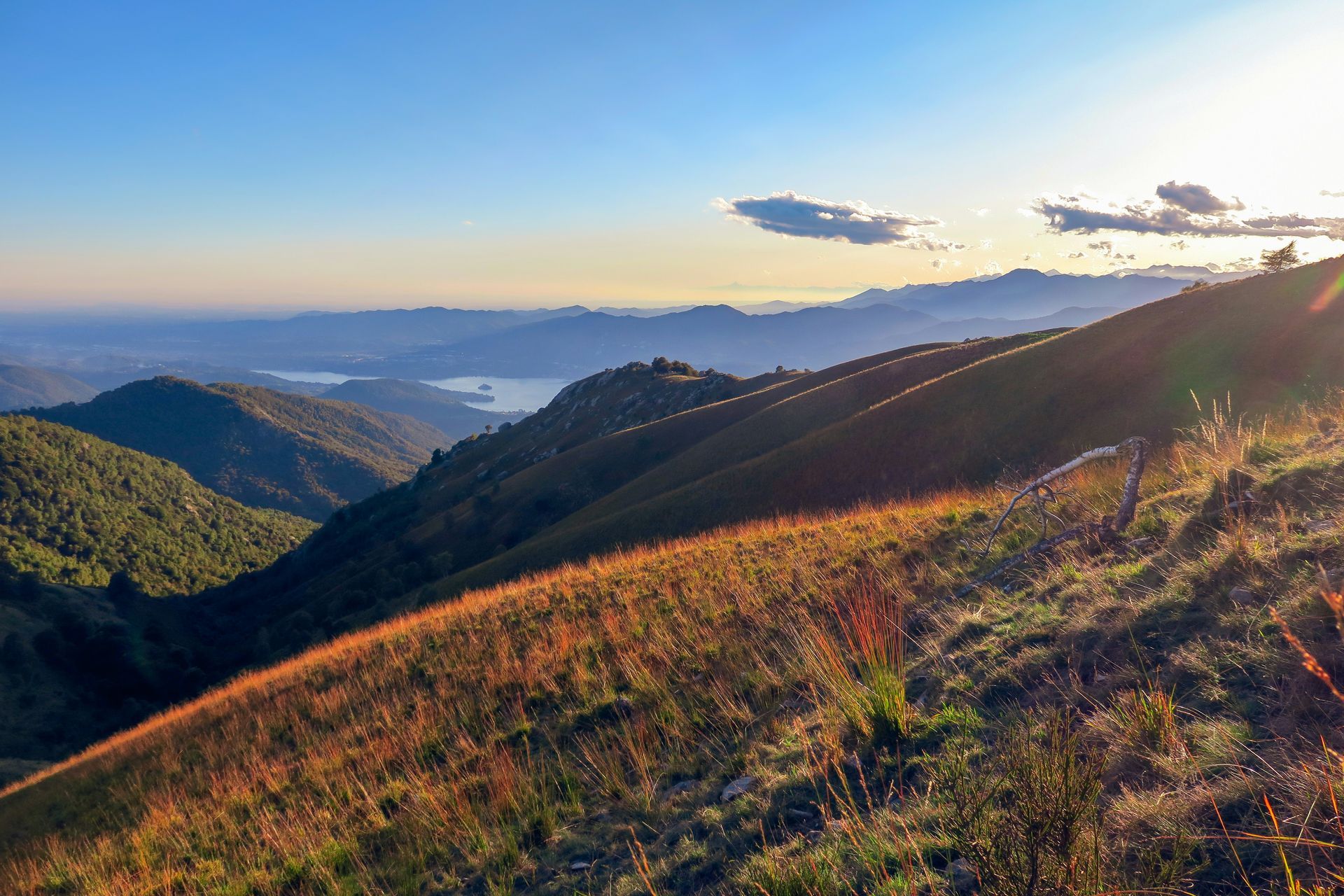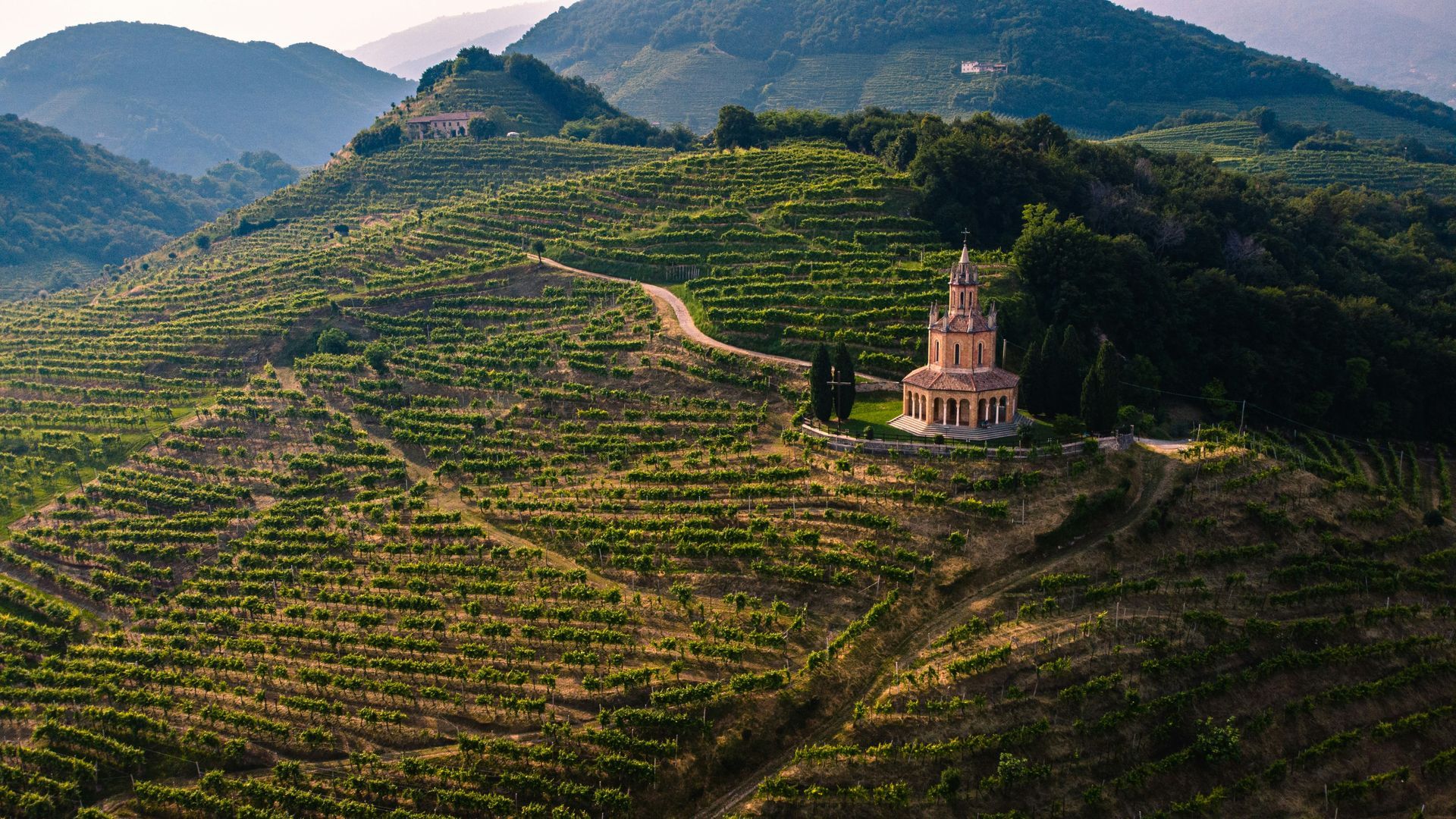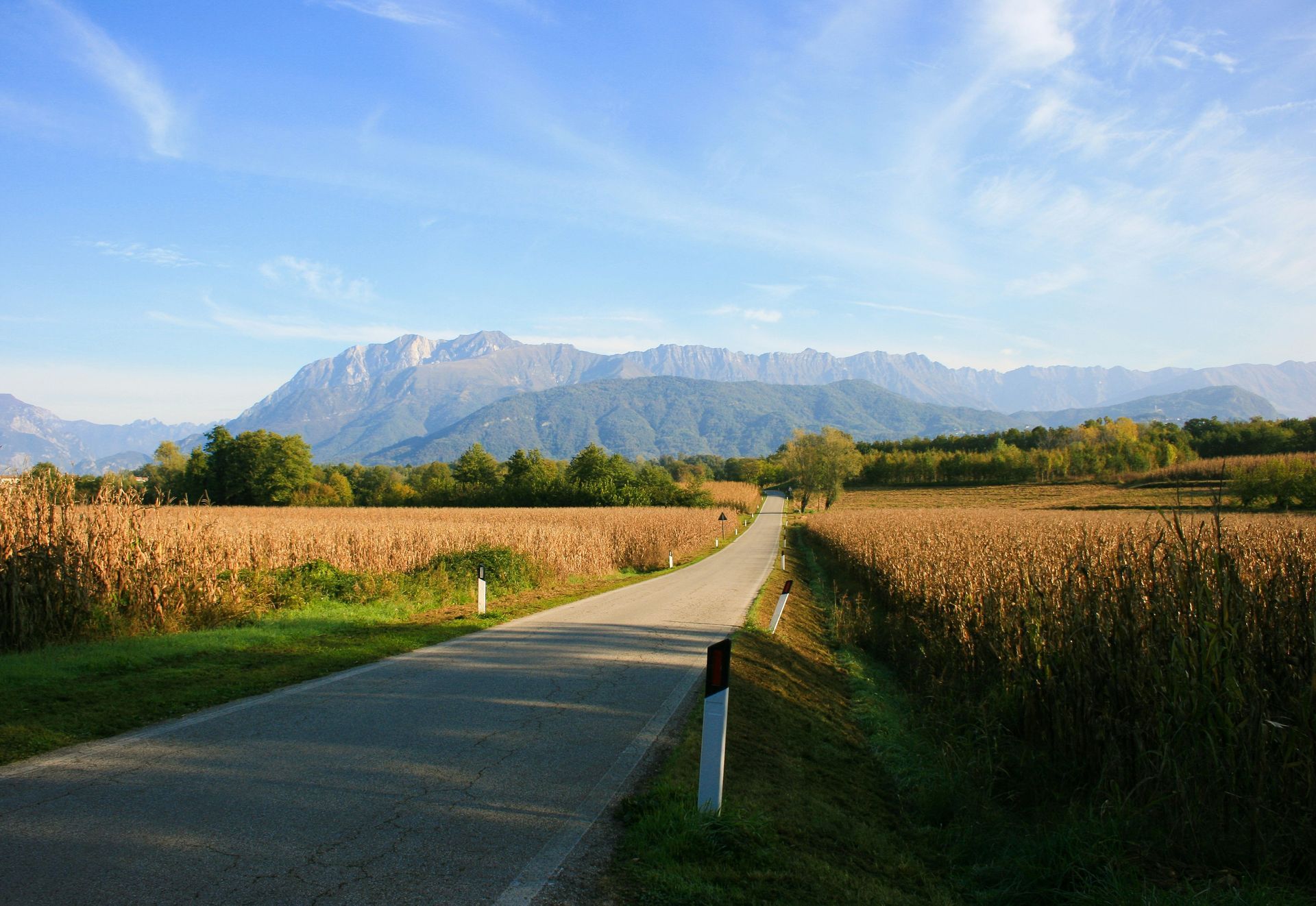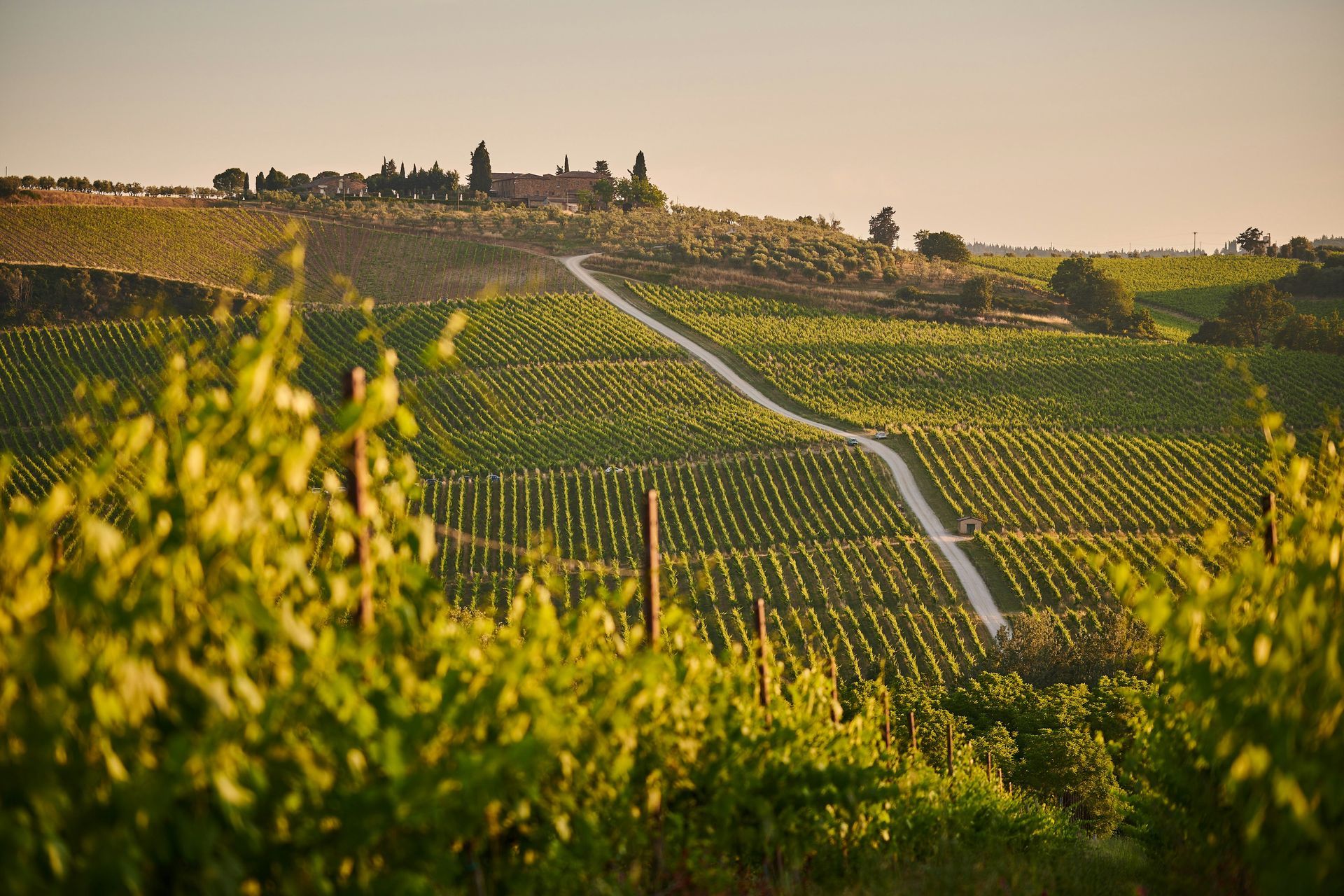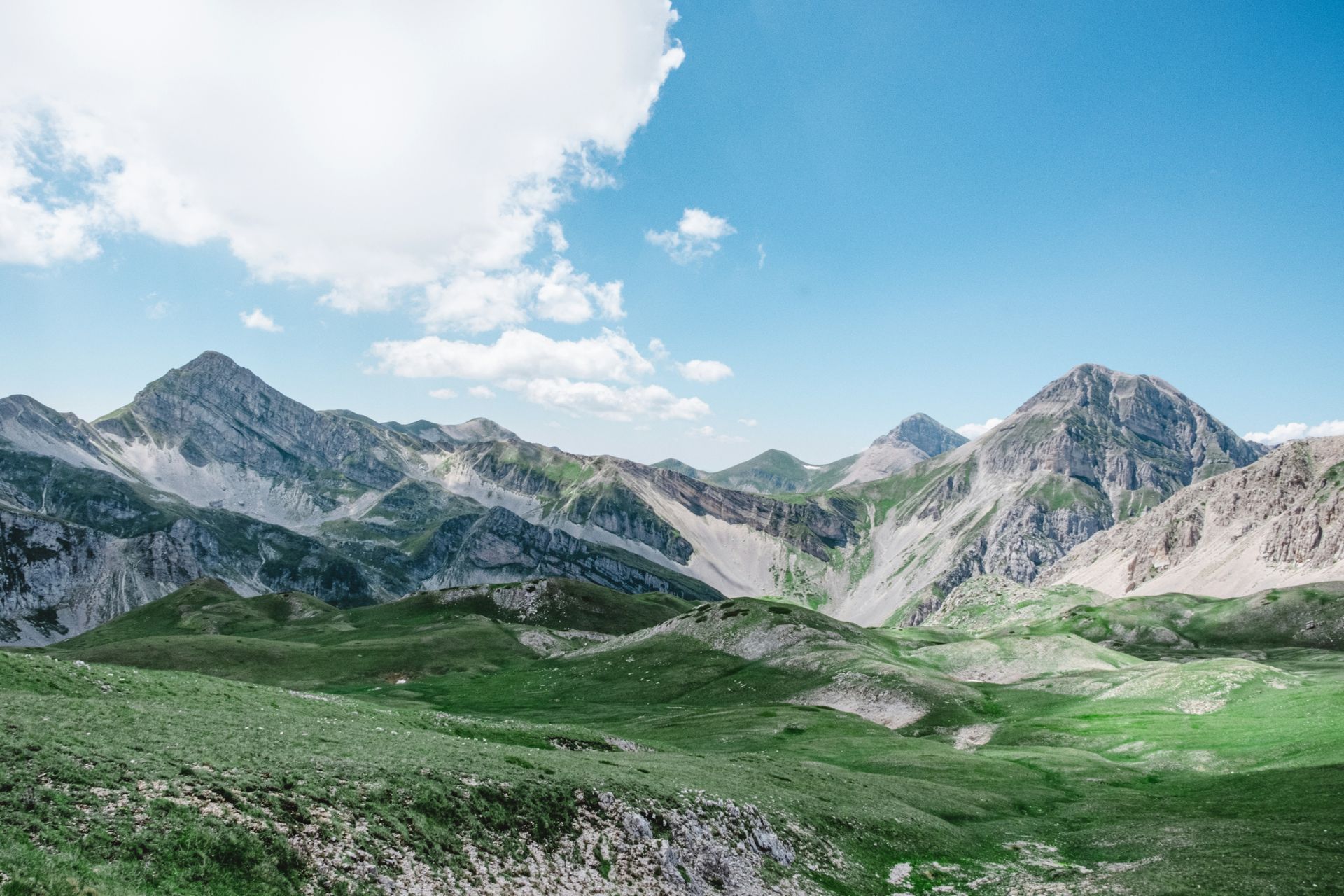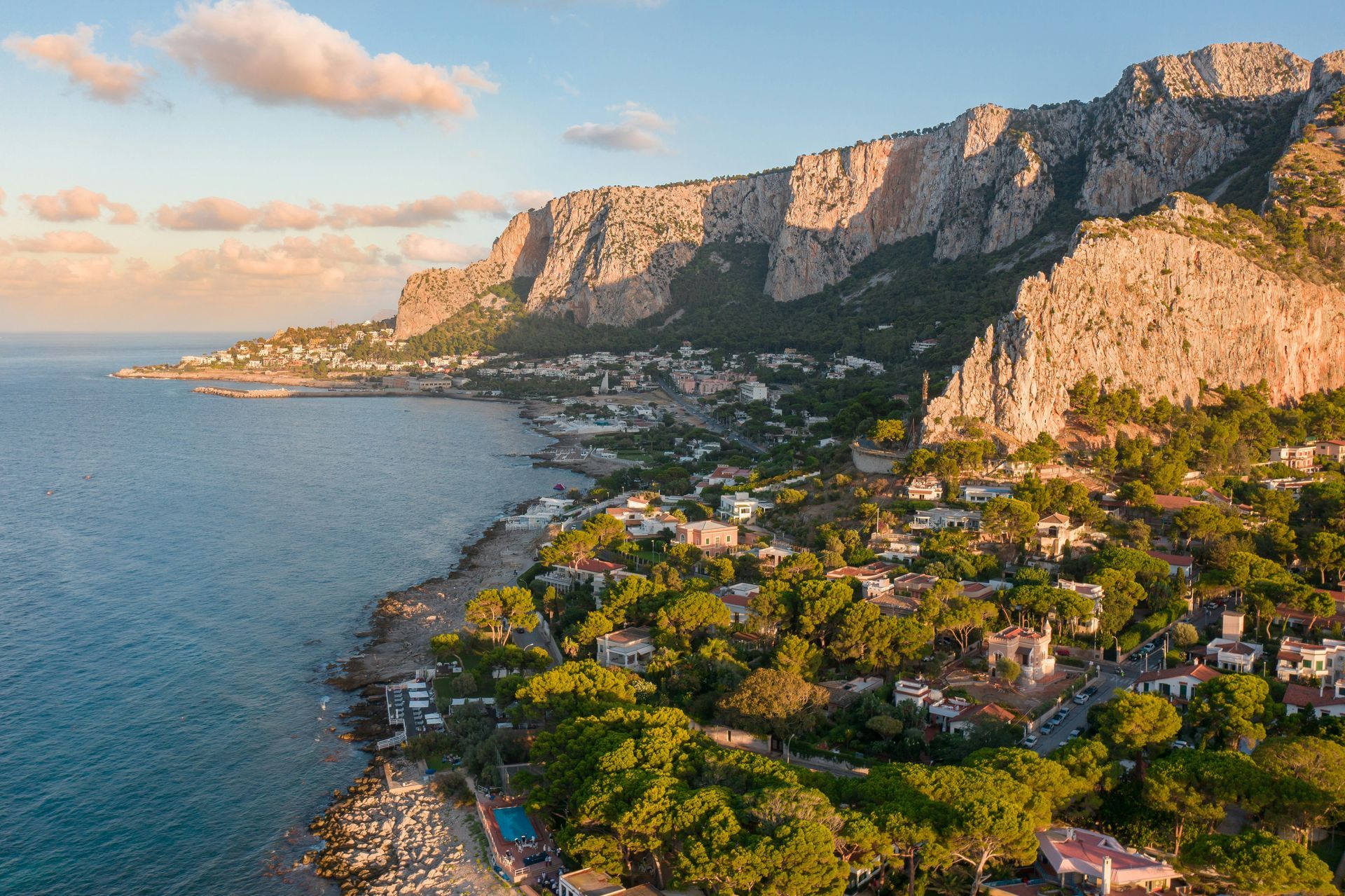Spreading Smile across the globe
Hidden Gems of Northern Italy
Hidden Gems of Italy are a testament to the country's diverse and enchanting beauty, often concealed from the traditional tourist routes. While Italy is celebrated for its iconic cities like Rome, Florence, Venice, and the Amalfi and Cinque Terre coasts, it's the lesser-known destinations that promise a unique journey. These unexplored regions offer travellers a chance to experience Italy's authentic culinary delights, rich historical narratives, and stunning natural landscapes. From the northern reaches to the southern shores, these Hidden Gems of Italy reveal a different facet of this remarkable nation.
Lake Orta - Piedmont
Hidden Gems of Italy come to life at Lake Orta, tucked away near the Swiss border in the heart of Piedmont. This hidden paradise often evades the spotlight compared to its more famous counterparts like Lake Como and Lake Garda. The historic town of Orta San Giulio, with its Baroque and Medieval architecture, cobbled streets, and idyllic Piazza Motta, enchants visitors. The glistening waters of the lake itself invite moments of serenity. What makes Lake Orta truly extraordinary is the mysterious island at its centre—a tranquil sanctuary inhabited by resident nuns.
Treviso - Veneto
Among the Hidden Gems of Italy, Treviso stands as a city in the Veneto region that retains its genuine northern Italian charm. Meandering through its narrow cobbled lanes, picturesque canals, and medieval city walls feels like a step back. Positioned on the fringes of the renowned Prosecco wine region, Treviso provides a delightful excuse for an aperitivo with a glass of Italy's renowned sparkling Prosecco.
Aosta Valley
Nestled among the bordering landscapes of Switzerland and France, the Aosta Valley showcases breathtaking alpine scenery, perched castles, and traditions that thrive throughout the year. When spring and summer arrive, the region's walking trails entice explorers. This season also brings lively festivals that celebrate folk traditions that date back to medieval times. Be sure to savour the local cheese Fontina, a culinary delight that embodies the spirit of this Hidden Gem of Italy.
Alba - Piedmont
Alba, a sought-after destination among Italy's hidden gems, is situated in the vineyards of the Langhe Hills. Once adorned with a hundred towers, Alba exudes a charming rural ambience. It's renowned for its autumn truffle festival, a gastronomic event that captures the essence of the region. Alba is also celebrated for its dark chocolate, hazelnut groves, white truffles, and prestigious wineries. It's from this very region that the sought-after Barolo wine originates.
Camogli - Liguria
Camogli, a typical and vibrant Italian seaside village on the Ligurian Riviera di Levante, perfectly embodies the spirit of the Hidden Gems of Italy. Towering, brightly painted houses dominate the town, and it has become a magnet for visitors seeking pristine beaches, Ligurian cuisine, the rustic fishing marina, Italian culture, and a tranquil natural setting. Camogli has earned its reputation for culinary excellence, focusing on fish and seafood, particularly anchovies and tuna, as well as the iconic pesto sauce made from basil and pine nuts.
Brescia - Lombardy
Hidden Gems of Italy often come alive through history, and Brescia is no exception. In this small city, history unfolds through a tapestry of architectural styles, spanning Roman, Medieval, Renaissance, Baroque, and even Art Deco. Walking through Brescia feels like a journey through time, and a visit to the captivating Piazza della Loggia, framed by a stunning Venetian-style palace at its heart, is a must for history enthusiasts.
Trieste
Trieste is a refreshingly unique destination, an Italian city positioned near the Slovenian border with its dialect that's a delightful blend of Austrian-German, Greek, Croatian, and Italian. Trieste's neoclassical waterfront is a sight to behold, with its marina brimming with stylish, glimmering yachts. The city's offerings include clear blue skies, expansive sandy beaches, city lidos, and the surrounding vineyards. Trieste is a Hidden Gem of Italy that belongs on every traveller's Northern Italian itinerary.
Modena - Emilia-Romagna
Modena is famed for its Hidden Gems of Italy, including balsamic vinegar, Luciano Pavarotti, the Romanesque cathedral, and the nearby Ferrari museum. Beyond these illustrious attractions, Modena reveals a treasure trove of remarkable restaurants. Massimo Bottura's Osteria Francescana has twice earned a place among the world's top 50 eateries, showcasing the culinary excellence of this Hidden Gem. While in Modena, don't miss the chance to savour local specialities like stuffed tortellini and sparkling Lambrusco wine, the perfect complement to your gastronomic journey.
Chiusa / Klausen - South Tyrol
Chiusa, also known as Klausen, is one of Italy's most picturesque villages. It is situated on the banks of the Isarco River in the South Tyrolean region near the Austrian border. Chestnut groves, green fields, vineyards, and farmsteads surround the town. In the village itself, visitors are captivated by narrow alleyways, coats of arms, large bay windows, crenellated facades, and the two main squares.
Ravenna - Emilia-Romagna
Ravenna offers a treasure trove of experiences among the Hidden Gems of Italy. This city is a feast for the senses, with its diverse offerings of food, music, art, culture, history, beaches, wine, and mosaics. Ravenna is home to eight UNESCO-listed sites, making it a must-visit for history and art enthusiasts. It's also known for its two-month-long music festival, Dante Alighieri's tomb, local culinary delights, nearby beach resorts, and the opportunity to explore pinewood forests. The city's fame is derived from its stunning mosaics, dating from the fifth and sixth centuries, scattered throughout the town.
In conclusion, Italy's Hidden Gems invite you to embark on a journey less travelled, where the rich tapestry of history, diverse cuisine, and breathtaking landscapes come to life. These lesser-known destinations provide an authentic Italian experience, away from the bustling crowds, revealing the nation's soul in its purest form. Explore these Hidden Gems to uncover Italy's hidden treasures.
Hidden Gems of Central Italy
Hidden Gems of Italy beckon the adventurous traveller to explore the lesser-known treasures that this remarkable country holds. From the picturesque valleys of Tuscany to the medieval charm of Umbria, the mysterious landscapes of Molise, and the architectural wonders of San Gimignano, these destinations promise unforgettable experiences.
Garfagnana - Tuscany
The Garfagnana region is a hidden gem in the beautiful Tuscan valley north of Lucca. It is crossed by the Serchio River, and the landscape is characterized by fertile greenery, rugged mountains, and charming villages. Outdoor activities such as hiking, walking, and mountain biking are enjoyed by many people in this area. Garfagnana is home to several one-of-a-kind attractions, including a ghost town, a wind cave, and the Devil's Bridge at Borgo a Mozzano.
Gubbio - Umbria
Umbria hides many treasures, and a particular favourite among Hidden Gems of Italy is the Medieval hilltop town of Gubbio. Gubbio, a city with a history dating back over 2,000 years, is a maze of cobbled streets and stone buildings that have been perfectly preserved. Visitors can take a cable car to the summit of Mount Ingino to enjoy panoramic views of the surrounding area. In addition, Gubbio hosts Italy's oldest event, the Corsa dei Ceri, in which teams race through the streets carrying massive wooden candles.
Molise
Molise is Italy's second-smallest region and one of its best-kept secrets. Hidden Gems of Italy are plentiful here. The picturesque town of Agnone is renowned for its artisanal bells, produced by the oldest family-run bell foundry in the world. Meanwhile, Campobasso, the regional capital, boasts a stunning medieval old town. Molise offers a captivating mix of historical charm and natural beauty, with rugged mountains, rolling hills, and pristine beaches along the Adriatic coast.
San Gimignano - Tuscany
Nestled in the heart of Tuscany, San Gimignano boasts medieval architecture and, of course, its famous towers. The town's historic centre is a UNESCO World Heritage site, known for its fourteen stone towers that once symbolised wealth and power. San Gimignano offers a glimpse into medieval Tuscany, with well-preserved streets and squares that transport visitors to another time. Besides the towers, make sure to explore the Collegiate Church and indulge in the local Vernaccia wine, a crisp white wine produced in the region.
Spello - Umbria
Another gem in the heart of Italy, Spello enchants visitors with its winding medieval streets and stunning floral displays. Known as the "Città Infiorata" or "flower town," Spello hosts the Infiorata festival, during which the streets are carpeted with intricate flower petal designs. This event occurs in early June and is a magnificent spectacle. Outside of the festival, Spello's charm continues with its well-preserved historic centre and beautiful churches.
Trulli of Alberobello - Apulia
Apulia, or Puglia, is famous for its unique trulli houses, and Alberobello is the epicentre of this architectural marvel. These whitewashed conical homes are a UNESCO World Heritage Site that offers a glimpse into the region's history. Visitors can even stay in trulli that have been converted into accommodations, providing a truly immersive experience.
Norcia - Umbria
Nestled in the Sibillini Mountains, Norcia is renowned for its gastronomy. This charming town produces exceptional cured meats, particularly prosciutto and salami. For food enthusiasts, Norcia is a true Hidden Gem of Italy. Explore local shops, taste the region's specialities, and visit the beautiful town square. Nature enthusiasts will also find hiking trails and natural beauty in the nearby Monti Sibillini National Park.
Montefalco - Umbria
Montefalco is often called the "Balcony of Umbria" for its stunning views over the surrounding valley. This charming town is also known for its wine, particularly Sagrantino, one of Italy's most robust red wines. Montefalco's medieval centre is picturesque and hosts several churches with remarkable frescoes, making it a cultural and gastronomic gem.
Castelluccio di Norcia - Umbria
High in the Sibillini Mountains, Castelluccio di Norcia is a quaint village known for its stunning wildflower blooms in late spring and early summer. The surrounding plateau becomes a colourful tapestry, attracting photographers and nature enthusiasts. Besides the flowers, visitors can enjoy hiking and take in the breathtaking scenery. Hidden Gems of Italy like Castelluccio di Norcia provide a unique connection to nature and the changing seasons.
In the heart of Italy, a treasury of Hidden Gems awaits the intrepid traveller. From the mysterious ghost town of Garfagnana to the ancient charms of Gubbio, the enchanting landscapes of Molise, and the medieval splendours of San Gimignano, these lesser-known destinations reveal Italy's diverse beauty and rich history. Journey through the tranquil streets of Spello, marvel at the unique trulli houses in Alberobello, savour the culinary delights of Norcia, and bask in the vibrant blooms of Castelluccio di Norcia. These Hidden Gems of Italy promise an unforgettable adventure in a land of timeless wonder.
Hidden Gems of Southern Italy
Italy, a land of rich history, captivating art, and exquisite cuisine, is known for its iconic cities and world-famous landmarks. Despite the tourist-filled streets and crowded piazzas, the country holds many hidden gems—lesser-known destinations that offer a more intimate and authentic experience. These places, tucked away in various corners of Italy, are a testament to the nation's diverse and enchanting beauty, waiting to be explored by the discerning traveller. From medieval towns perched atop hills to charming coastal villages and ancient archaeological sites, the Hidden Gems of Italy promise unique adventures and unforgettable memories.
Civita di Bagnoregio - Lazio
Civita di Bagnoregio is often called the "Dying Town" because of its gradual erosion over the centuries. This medieval village is perched on a hilltop and can only be reached by a long footbridge. It's a unique destination, seemingly suspended in time, and is the perfect Hidden Gem for history buffs and photographers.
Matera - Basilicata
Matera, known for its cave dwellings, is one of Italy's most intriguing and unique destinations. The Sassi di Matera, a historic cave settlement, is a UNESCO World Heritage Site. Matera is gaining popularity but still qualifies as one of the Hidden Gems of Italy. Touring this labyrinth of stone-carved rooms and narrow streets offers an incredible historical journey.
Sperlonga - Lazio
Sperlonga is a charming coastal town characterized by its pristine beaches, winding alleys, and picturesque piazzas. Nestled between Rome and Naples, Sperlonga is often overlooked by travellers. A visit here reveals a relaxed and authentic Italian atmosphere, perfect for strolls and seaside relaxation. Take advantage of the Grotto of Tiberius, a cave once used as the emperor's villa and now a museum.
Paestum - Campania
The ancient ruins of Paestum, originally a Greek colony known as Poseidonia, provide an extraordinary window into Italy's history. The temples are exceptionally well-preserved, ranking among the best-preserved in the world. Paestum is also home to a fascinating archaeological museum that displays artefacts from the site. Enjoy a step back in time amid the Hidden Gems of Italy.
Castro - Apulia
Castro, a picturesque coastal town, boasts a historic centre perched on a rocky outcrop. Visitors can explore ancient churches, fortifications, and a charming harbour. Castro also has sea caves that can be explored by boat. The region's cuisine is a seafood lover's paradise, making this town a Hidden Gem for food enthusiasts as well.
Scilla - Calabria
Scilla, an idyllic coastal village in Calabria, offers stunning sea views and hidden beaches. The town is known for the Ruffo Castle, which dominates the landscape, and the legendary sea monster Scylla from Greek mythology. The charming village is a serene and lesser-known alternative to some of the more crowded Italian seaside destinations.
San Marino
San Marino is a microstate surrounded by Italy and is one of the world's oldest republics. It's a destination that's often missed, making it a true Hidden Gem. San Marino boasts dramatic mountaintop views, historic architecture, and unique attractions like the Guaita Tower and the Palazzo Pubblico. For collectors, the country is also known for its beautiful stamps and coins.
Conclusion
Discovering the Allure of Hidden Gems of Italy
Hidden Gems of Italy offers travellers an authentic experience, far removed from the tourist-packed cities and famous landmarks. These lesser-known destinations unravel the genuine charm, culture, history, and culinary wonders that make Italy an endlessly fascinating country to explore. From the mountains of the North to the coasts of the South, each region holds its treasures, waiting to be discovered by those who venture off the beaten path. By exploring the Hidden Gems of Italy, you can craft a unique and unforgettable journey that deepens your appreciation of this incredible country. Plan your trip carefully, and you will be rewarded with the beauty, history, and flavours that characterize these enchanting places.
The Ultimate Guide to Italian Wine Regions
Embarking on a sensory journey through the enchanting landscapes of Italy, one cannot ignore the rich tapestry woven by its diverse and illustrious wine regions. From the sun-drenched hills of Tuscany to the sprawling vineyards of Piedmont, Italy stands as a vinicultural haven, boasting a legacy that spans centuries and encompasses an array of grape varieties, winemaking traditions, and terroirs. This ultimate guide unravels the intricate story of Italian wine regions, inviting enthusiasts and connoisseurs alike to explore the oenological treasures that define the country's viticultural identity.
Italian Wine Regions are more than just geographical demarcations; they are chapters in a story written by the fertile soil, kissed by the Mediterranean sun, and nurtured by generations of passionate winemakers. Each region unfolds a unique narrative, from the bold reds of Chianti Classico to the delicate whites of Friuli-Venezia Giulia, offering a sensorial voyage that transcends mere taste and aroma. As we delve into this guide, prepare to discover the essence of Italian winemaking, where tradition meets innovation, and every sip is a sip into the heart of Italy's vinous artistry.
Valle d’Aosta
Nestled in the alpine embrace of northern Italy, Valle d’Aosta emerges as a hidden jewel in the crown of Italian wine regions. This enchanting territory, bordered by France and Switzerland, not only captivates with its breathtaking landscapes but also leaves an indelible mark on the world of viticulture.
Valle d’Aosta's winemaking heritage is as rugged and unique as its mountainous terrain. The vineyards, precariously perched on steep slopes, endure the challenges of altitude and climate to produce wines that mirror the region's distinct character. The crisp mountain air, fertile soils, and sun-kissed slopes create an ideal canvas for cultivating indigenous grape varieties like Petite Arvine and Prié Blanc.
As one traverses the vine-clad hills, a journey through Valle d’Aosta's wine culture unfolds—a tale of resilience and craftsmanship. From the structured reds of Nebbiolo to the aromatic whites born from centuries-old traditions, Valle d’Aosta stands as a testament to the symbiotic relationship between terroir and grape.
In every glass of Valle d’Aosta wine, one discovers not just a beverage but a sip of alpine history, a communion with nature, and a glimpse into the soul of one of Italy's most extraordinary wine regions.
Piedmont
In the northwest corner of Italy, Piedmont emerges as a symphony of rolling hills and elegant vineyards, etching its name among the most revered Italian wine regions. As a region deeply intertwined with viticultural heritage, Piedmont's undulating landscapes are adorned with noble grape varieties that have earned global acclaim.
Piedmontese wines are a testament to tradition and craftsmanship, with the Nebbiolo grape reigning supreme. The famed Barolo and Barbaresco wines, born from the Nebbiolo vines embraced by the misty foothills of the Alps, embody the region's commitment to excellence. These structured reds, often likened to the truffles that flourish in Piedmont's soil, showcase the intersection of terroir and winemaking mastery.
Yet, Piedmont is not defined solely by its iconic reds. The Barbera and Dolcetto varietals yield wines of approachable elegance, offering a spectrum of flavors that mirror the region's diverse terroirs. In every bottle from Piedmont, one discovers not just wine but a narrative—the story of a land where the poetry of nature converges with the artistry of winemakers, creating a sensory masterpiece.
Liguria
Liguria, a narrow coastal strip hugging the azure waters of the Ligurian Sea, stands as a captivating jewel within the mosaic of Italian wine regions. Renowned for its dramatic cliffs, picturesque villages, and vibrant culinary scene, Liguria's viticultural offerings add another layer to its sensory tapestry.
The terraced vineyards that cling to the steep hillsides are a testament to Liguria's commitment to winemaking despite challenging topography. The region is celebrated for cultivating the Vermentino grape, which thrives in the maritime-influenced climate, yielding crisp and aromatic white wines. The Vermentino, kissed by sea breezes and bathed in sunlight, imparts a unique coastal character to Ligurian wines.
Among the notable appellations is the Cinque Terre, where the vineyards, carved into the rugged landscape, produce wines that echo the terroir's essence. Ligurian wines, like the region itself, are an expression of resilience, capturing the spirit of a land where sea meets mountain in a harmonious blend that invites wine enthusiasts to savor the taste of Liguria's coastal beauty in every sip.
Lombardy
Lombardy, an enchanting region in northern Italy, seamlessly marries opulent landscapes with a rich winemaking heritage, solidifying its place among the distinguished Italian wine regions. Nestled against the foothills of the Alps and stretching to the plains, Lombardy's diverse terroirs foster an array of grape varieties that weave a tale of elegance and tradition.
At the heart of Lombardy's vinicultural charm is the sparkling Franciacorta, a symbol of Italian excellence in the realm of sparkling wines. Crafted using the méthode traditionnelle, Franciacorta's Chardonnay, Pinot Noir, and Pinot Blanc grapes sparkle with effervescence, echoing the pristine beauty of the region's lakes.
Lombardy's red wines, notably those from the Valtellina region, showcase the Nebbiolo grape's prowess, delivering complex and structured masterpieces. As one embarks on a vinous journey through Lombardy, each sip becomes a passport to the region's cultural richness, a blend of Alpine purity and Italian passion that elevates Lombardy's wines to a league of their own.
Trentino-Alto Adige
Trentino-Alto Adige, cradled within the embrace of the Dolomites, emerges as a captivating chapter in the narrative of Italian wine regions. This northern gem, where Alpine majesty meets Mediterranean warmth, boasts a diverse viticultural landscape that mirrors the region's cultural tapestry.
The cool mountain air and sunny slopes contribute to the production of crisp and aromatic whites, with the Müller-Thurgau and Gewürztraminer varietals taking center stage. The renowned Pinot Grigio also finds its home in this picturesque terrain, crafting wines that encapsulate the essence of Trentino-Alto Adige.
Red wines, such as those from the Lagrein and Schiava grapes, reveal the region's commitment to expressing terroir. The intertwining influences of Germanic and Italian traditions further enrich the wine culture, creating a harmonious blend that is as distinctive as the jagged peaks that grace the horizon.
Trentino-Alto Adige's wines, like the region itself, unfold as a sensory journey—a symphony of flavors and aromas that transport enthusiasts to the alpine heights and sun-kissed valleys, celebrating the unique charm of this northern Italian haven.
Veneto
Veneto, a region steeped in history and cultural richness, graces the northern Italian landscape with a remarkable presence in the realm of winemaking. As one of the preeminent Italian wine regions, Veneto's vineyards sprawl across undulating hills and plains, cultivating a diverse array of grape varieties that contribute to its renowned oenological tapestry.
The jewel in Veneto's vinous crown is the iconic Prosecco, a sparkling wine hailing from the gentle slopes of the Conegliano-Valdobbiadene area. Its effervescence captures the essence of Veneto's sunny climate, creating a celebratory libation that resonates globally.
The region also boasts Amarone della Valpolicella, a robust red crafted from dried Corvina, Rondinella, and Molinara grapes. This bold and complex wine embodies the passion and dedication of Veneto's winemakers, showcasing the unique appassimento technique.
As one sips Veneto's wines, each glass becomes a vessel for the region's storied landscapes and cultural heritage, inviting enthusiasts on a sensory journey through the heart of Italian winemaking excellence.
Friuli-Venezia Giulia
Friuli-Venezia Giulia, nestled in Italy's northeastern corner, stands as a testament to the artistry of winemaking, earning its place among the distinguished Italian wine regions. This captivating area, bordered by the Julian Alps and the Adriatic Sea, is a mosaic of diverse microclimates and soils, creating a terroir that shapes wines of exquisite character.
The region is celebrated for its elegant white wines, notably the crisp and aromatic Friulano, as well as the internationally renowned Pinot Grigio. Friuli-Venezia Giulia's mastery extends to its production of orange wines, where skin contact imparts a unique amber hue and distinctive flavors.
Red wines, such as those crafted from the indigenous Refosco and Schioppettino grapes, showcase the region's commitment to preserving its cultural heritage. The Collio and Colli Orientali del Friuli subzones are particularly acclaimed for producing wines of exceptional quality.
Friuli-Venezia Giulia's wines, like the region itself, are a harmonious blend of tradition and innovation, inviting enthusiasts on a sensory journey through the lush vineyards and coastal beauty that define this Italian oenological treasure.
Tuscany
Tuscany, a tapestry of rolling hills, historic cities, and timeless beauty, stands as the quintessential jewel among Italian wine regions. With a legacy dating back centuries, Tuscany's vine-covered landscapes produce wines that encapsulate the region's rich cultural heritage.
The iconic Sangiovese grape takes center stage, giving life to renowned wines like Chianti, Brunello di Montalcino, and Vino Nobile di Montepulciano. These reds embody the essence of Tuscan terroir, offering a symphony of flavors from ripe cherries to earthy undertones.
Tuscany's wine identity extends beyond Sangiovese, with international varieties like Cabernet Sauvignon and Merlot flourishing in the Bolgheri region. The Super Tuscan movement, marked by innovative blends and premium craftsmanship, has further elevated the region's global standing.
Vineyards dotted with cypress trees and medieval villages create a picturesque setting for wine enthusiasts exploring Tuscany. From the sun-soaked hills of Chianti to the coastal allure of Bolgheri, every sip tells a story of passion, tradition, and the timeless allure of Tuscany's winemaking heritage.
Abruzzo
Nestled between the Apennines and the Adriatic Sea, Abruzzo emerges as a hidden gem within the realm of Italian wine regions. This picturesque region, known for its diverse landscapes, medieval villages, and hearty cuisine, also boasts a winemaking tradition that captures the essence of its rugged terroir.
The Montepulciano grape, indigenous to Abruzzo, takes center stage in producing robust red wines that mirror the region's bold character. Rich and full-bodied, Montepulciano d'Abruzzo wines offer a symphony of dark fruits, savory herbs, and a touch of rustic charm.
The gentle slopes and cool breezes of the Abruzzo hills contribute to the production of elegant Trebbiano d'Abruzzo whites, showcasing a crisp acidity and a bouquet of floral notes. Winemakers in Abruzzo, deeply rooted in tradition, employ a harmonious blend of modern techniques and ancient wisdom, resulting in wines that embody the soul and authenticity of this captivating Italian region. For those seeking a vinous journey off the beaten path, Abruzzo stands as a testament to the allure of undiscovered treasures in the world of Italian winemaking.
Sicily
Sicily, the sun-drenched jewel of the Mediterranean, stands as a captivating chapter in the narrative of Italian wine regions. Blessed with a diverse landscape of rolling hills, volcanic soils, and coastal breezes, Sicily creates an ideal canvas for winemakers to craft wines of exceptional character.
This enchanting region is home to indigenous grape varieties like Nero d'Avola, known for producing robust red wines with a symphony of dark fruit flavors and hints of spice. The volcanic soils surrounding Mount Etna contribute to the unique terroir, giving birth to wines that express a sense of place and terroir rarely found elsewhere.
Sicily's viticultural heritage extends beyond the reds, with crisp and aromatic whites such as Grillo and Catarratto gracing glasses with a taste of the island's sunshine. As one embarks on a vinous journey through Sicily, each sip becomes a sensory exploration of the island's history, culture, and the passion of its winemakers, making it an integral and fascinating chapter in the captivating tale of Italian wine regions.
Conclusion:
In conclusion, the world of Italian wine regions unfolds as a rich tapestry of flavors, histories, and landscapes, inviting enthusiasts on an extraordinary journey through diverse terroirs and indigenous varietals. From the sun-kissed vineyards of Sicily to the rolling hills of Tuscany, each region tells a unique story through its wines, reflecting the deep connection between the land, the people, and their rich cultural heritage.
Exploring the lesser-known gems like Sardinia and Abruzzo reveals the hidden treasures and untamed beauty that contribute to Italy's winemaking prowess. Whether sipping on a robust Montepulciano from Abruzzo or savoring the elegance of a Chianti from Tuscany, each bottle carries the imprint of centuries-old traditions and a passionate commitment to quality.
As we raise our glasses to the diverse terroirs and grape varieties that grace Italy's landscapes, it becomes evident that the world of Italian wines is not just a journey for the palate but a cultural expedition, where each sip unveils a chapter of history and a celebration of the artistry that defines this renowned winemaking nation.
Things To Do | Travel Information | Local's Favourites




